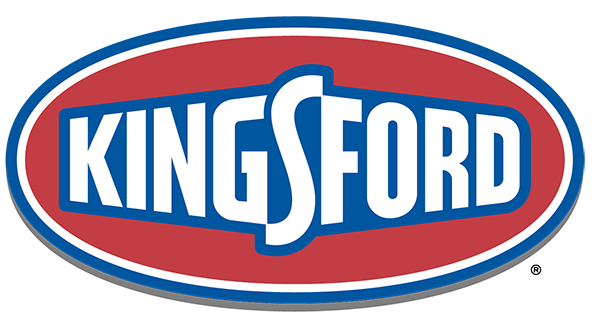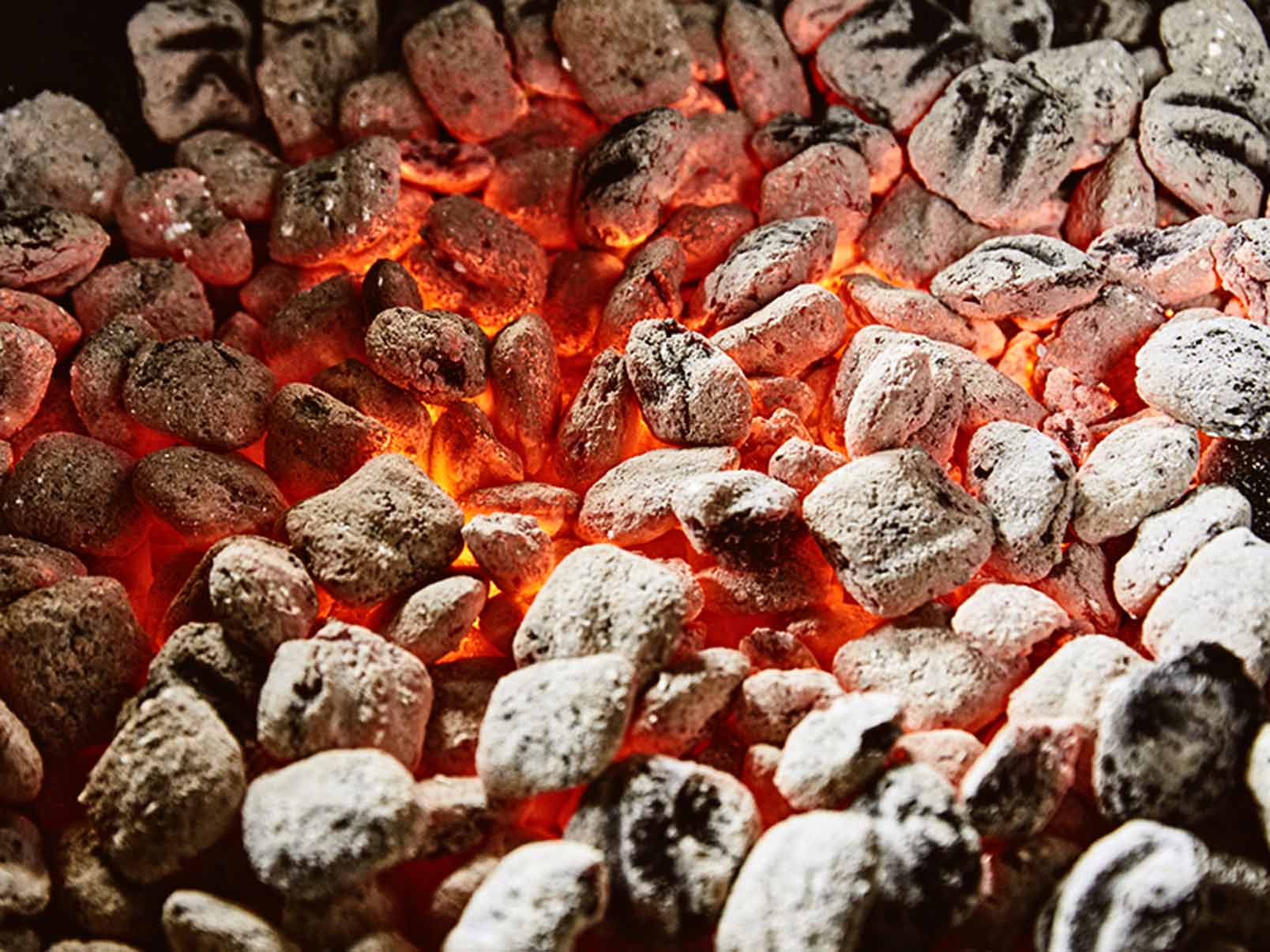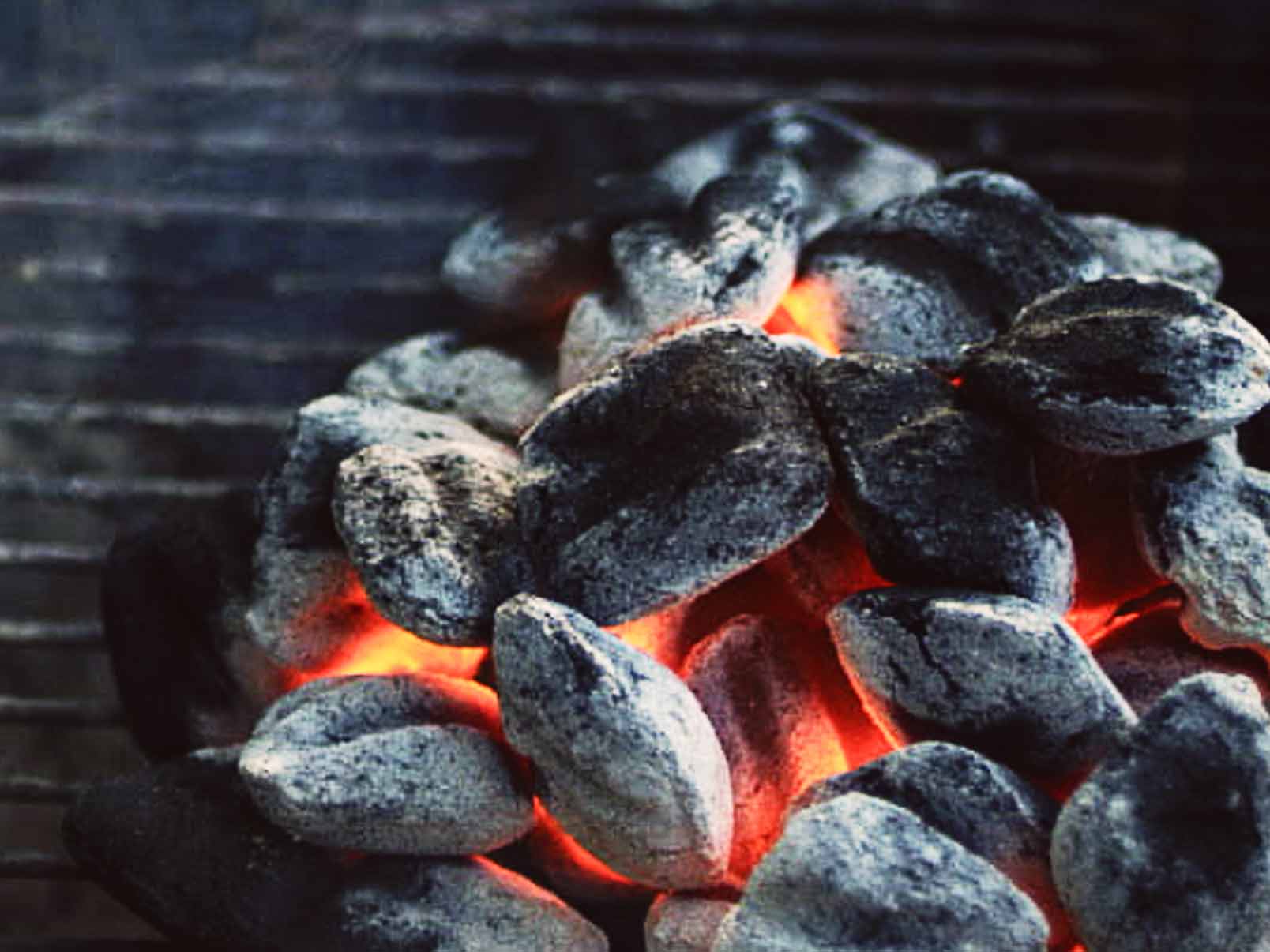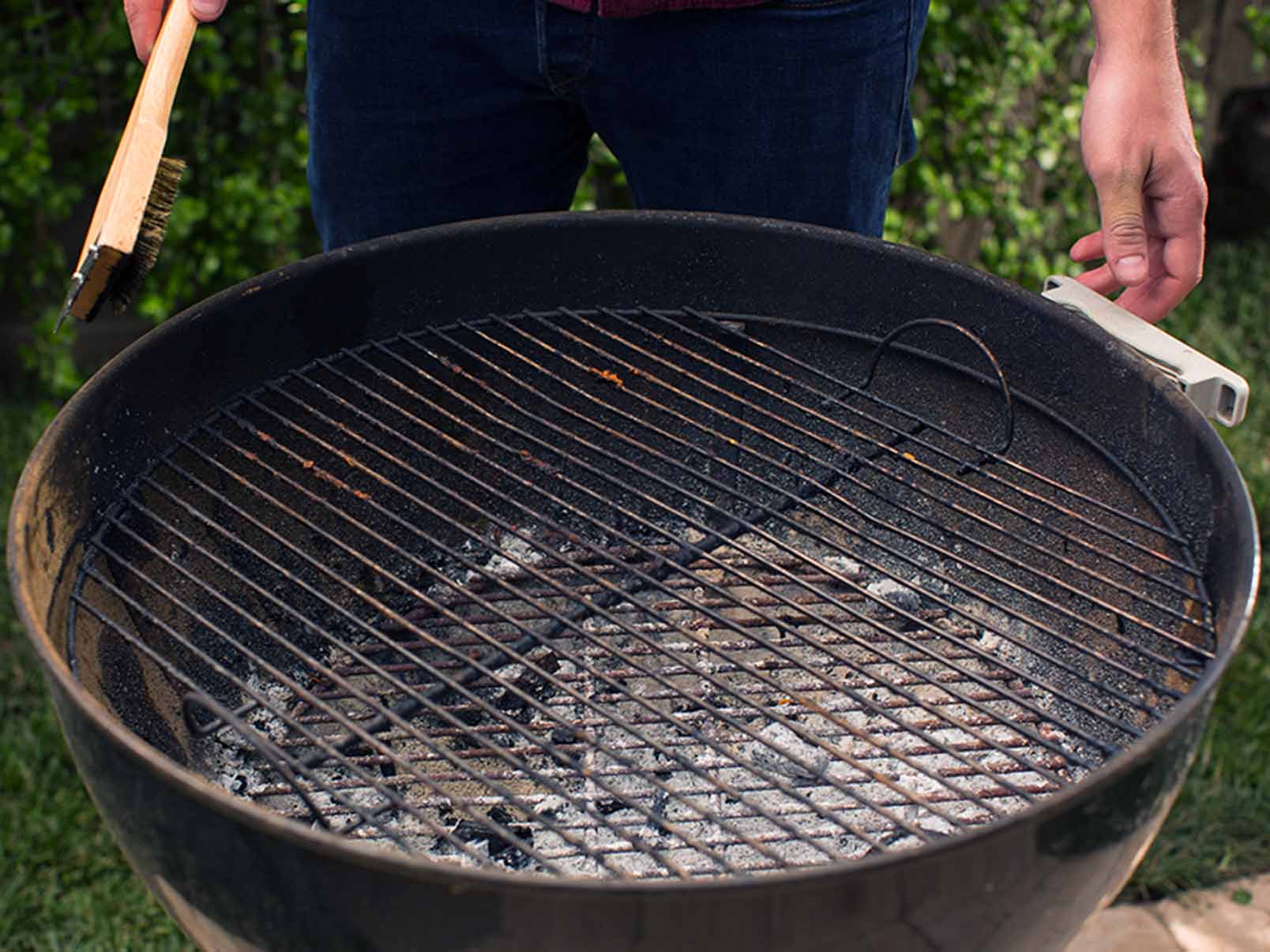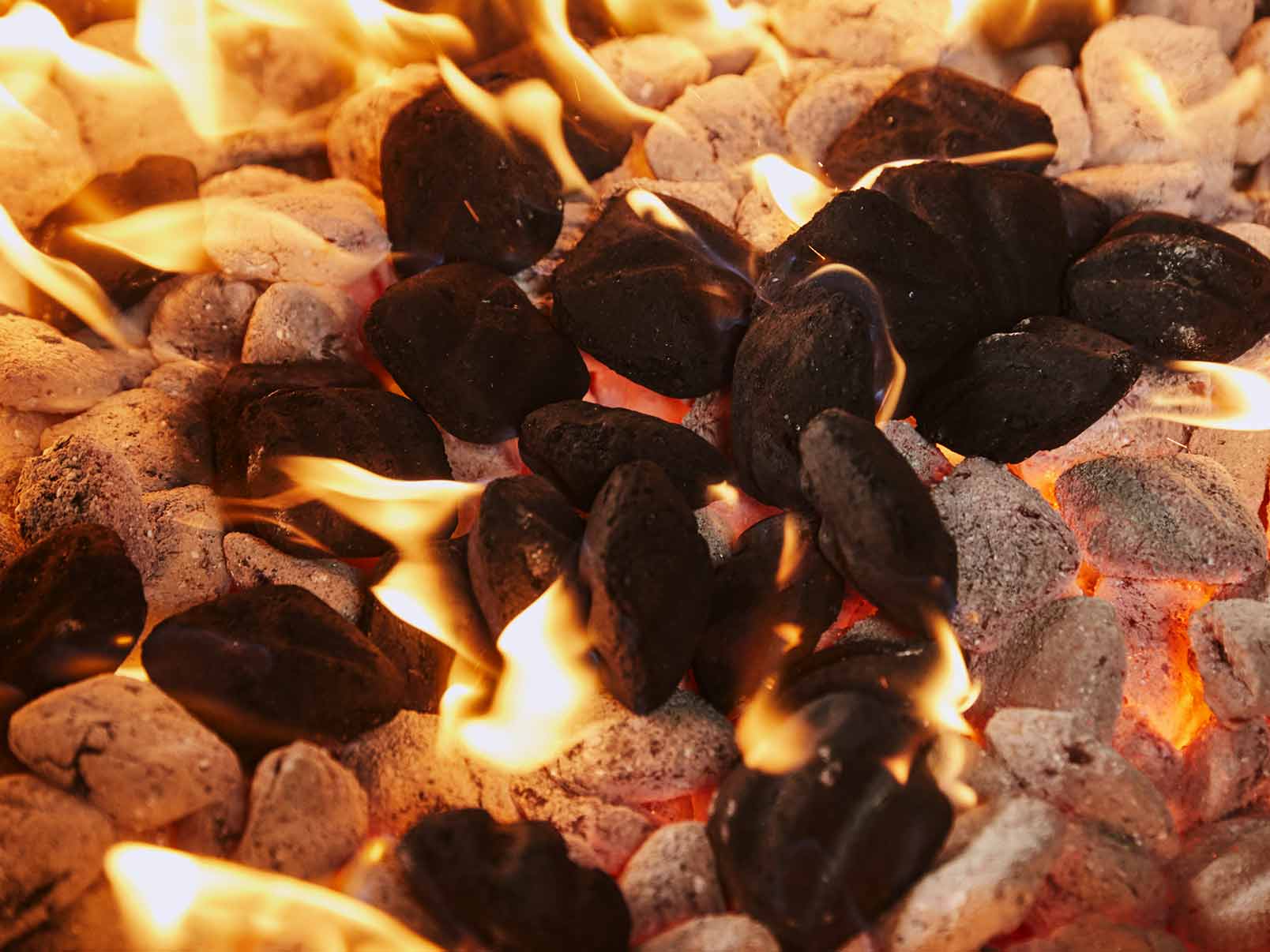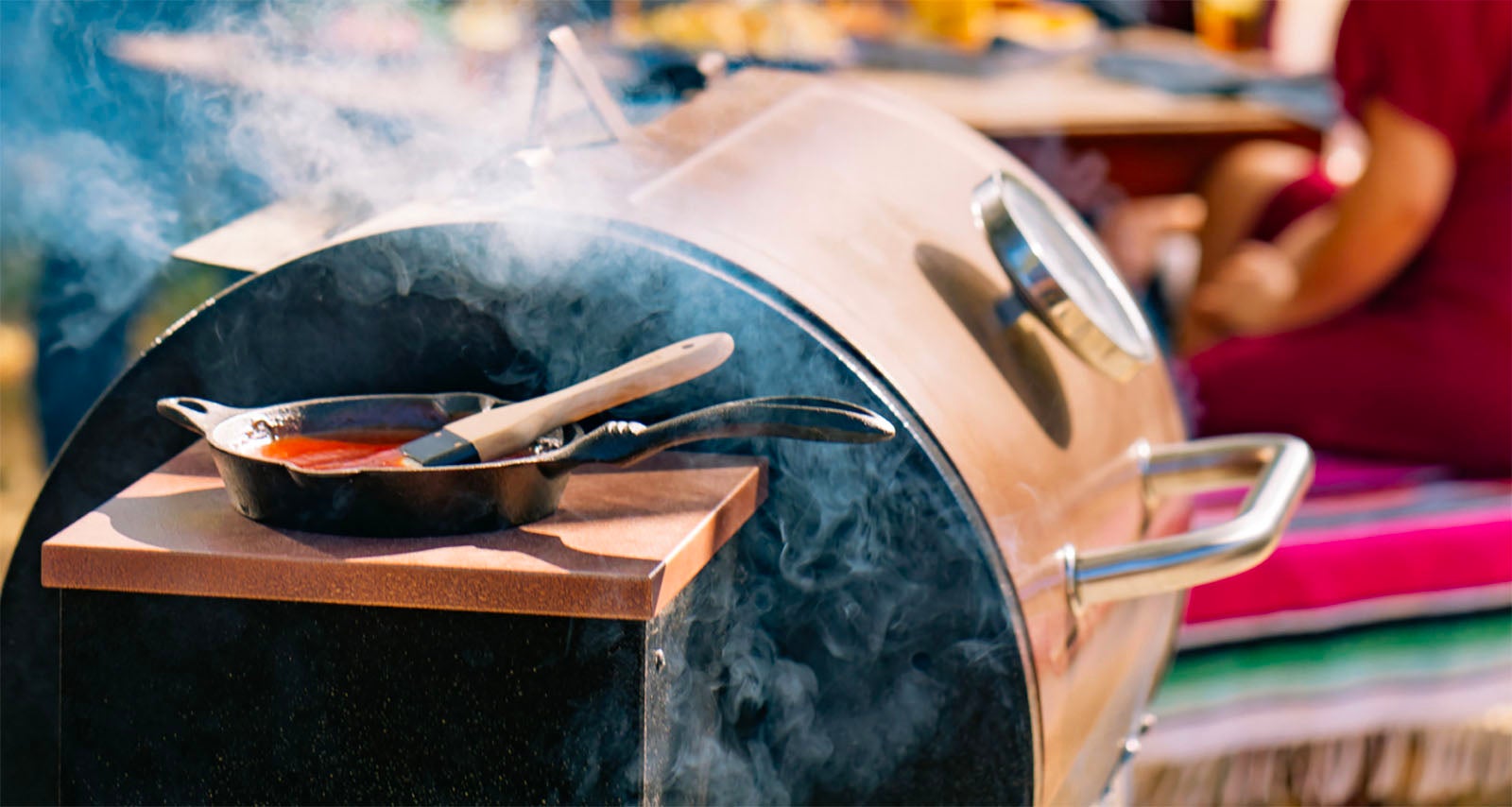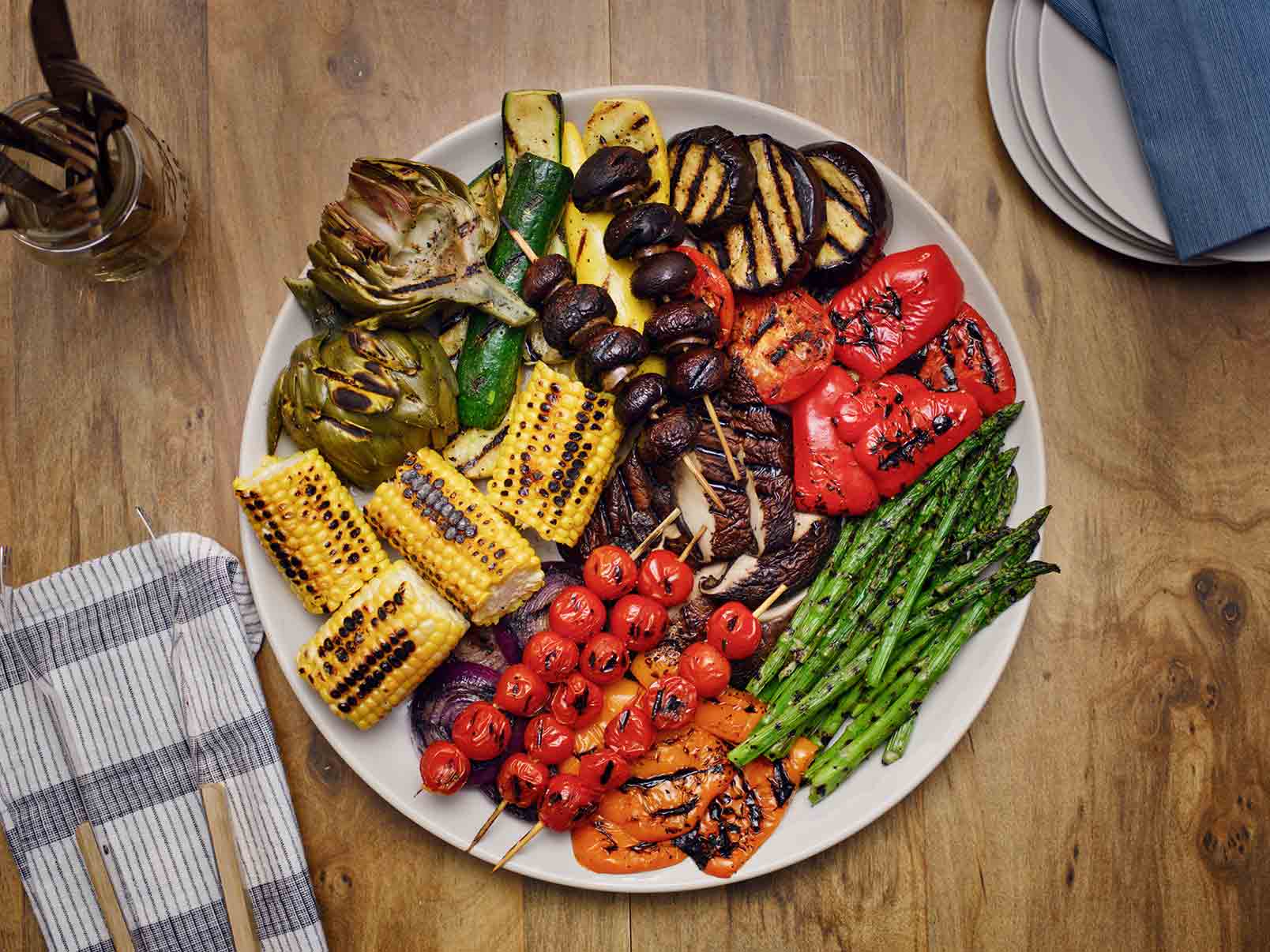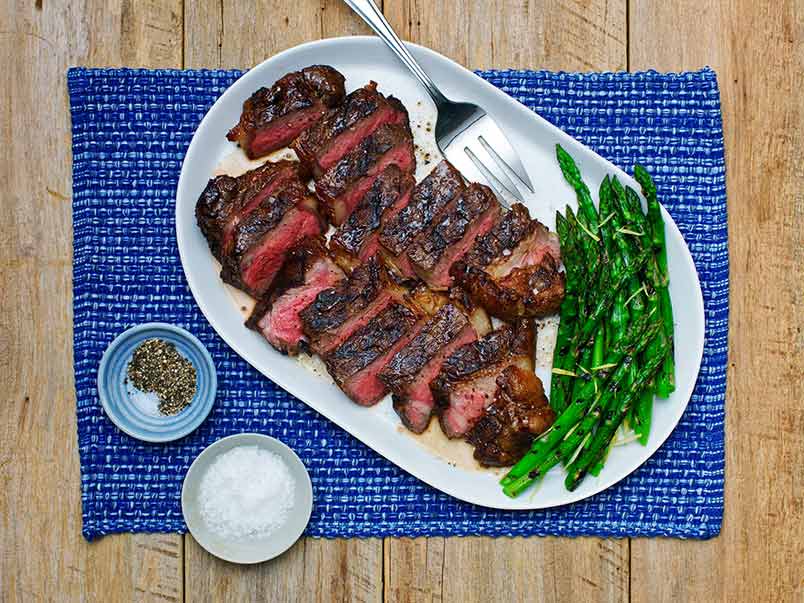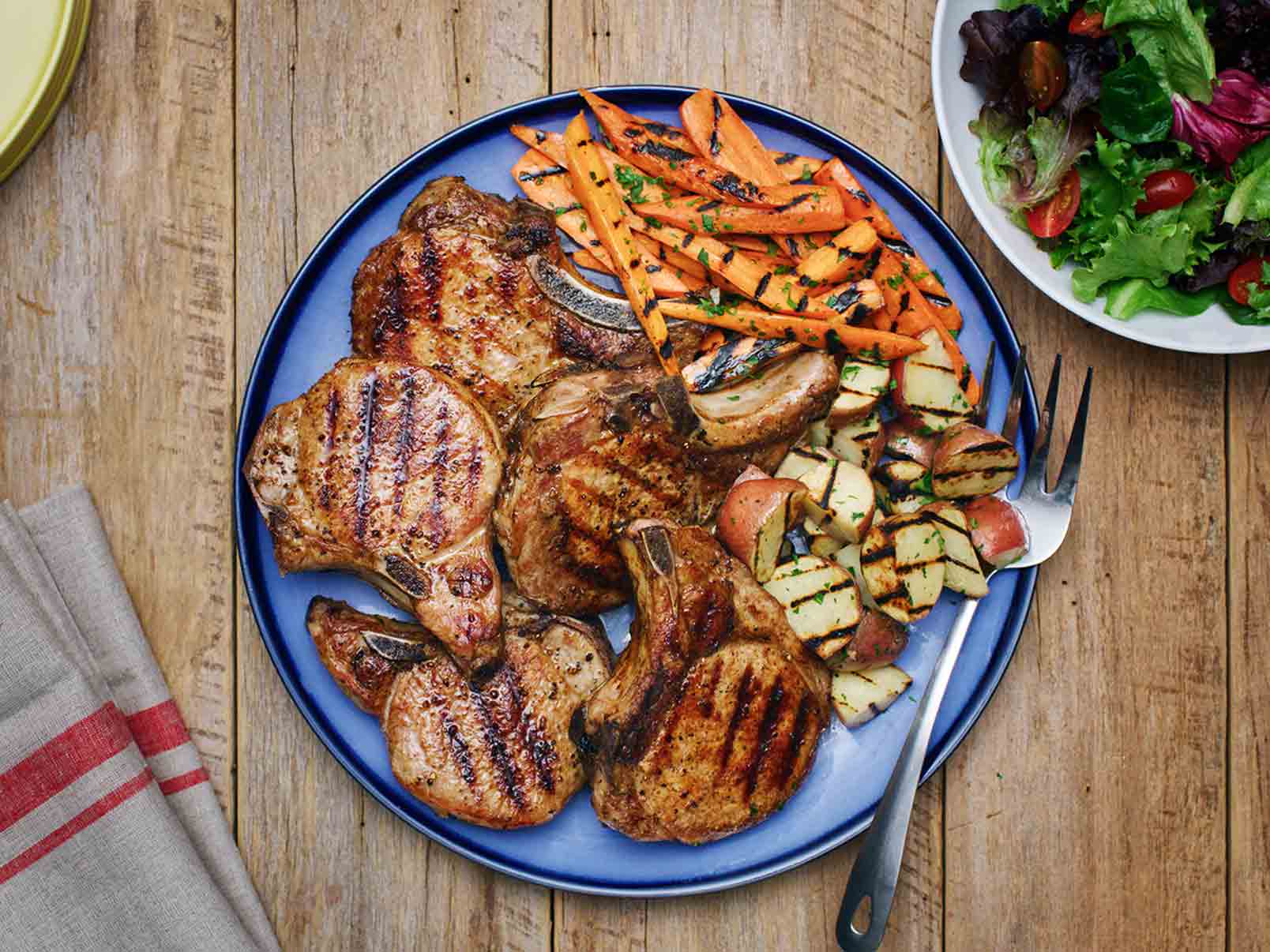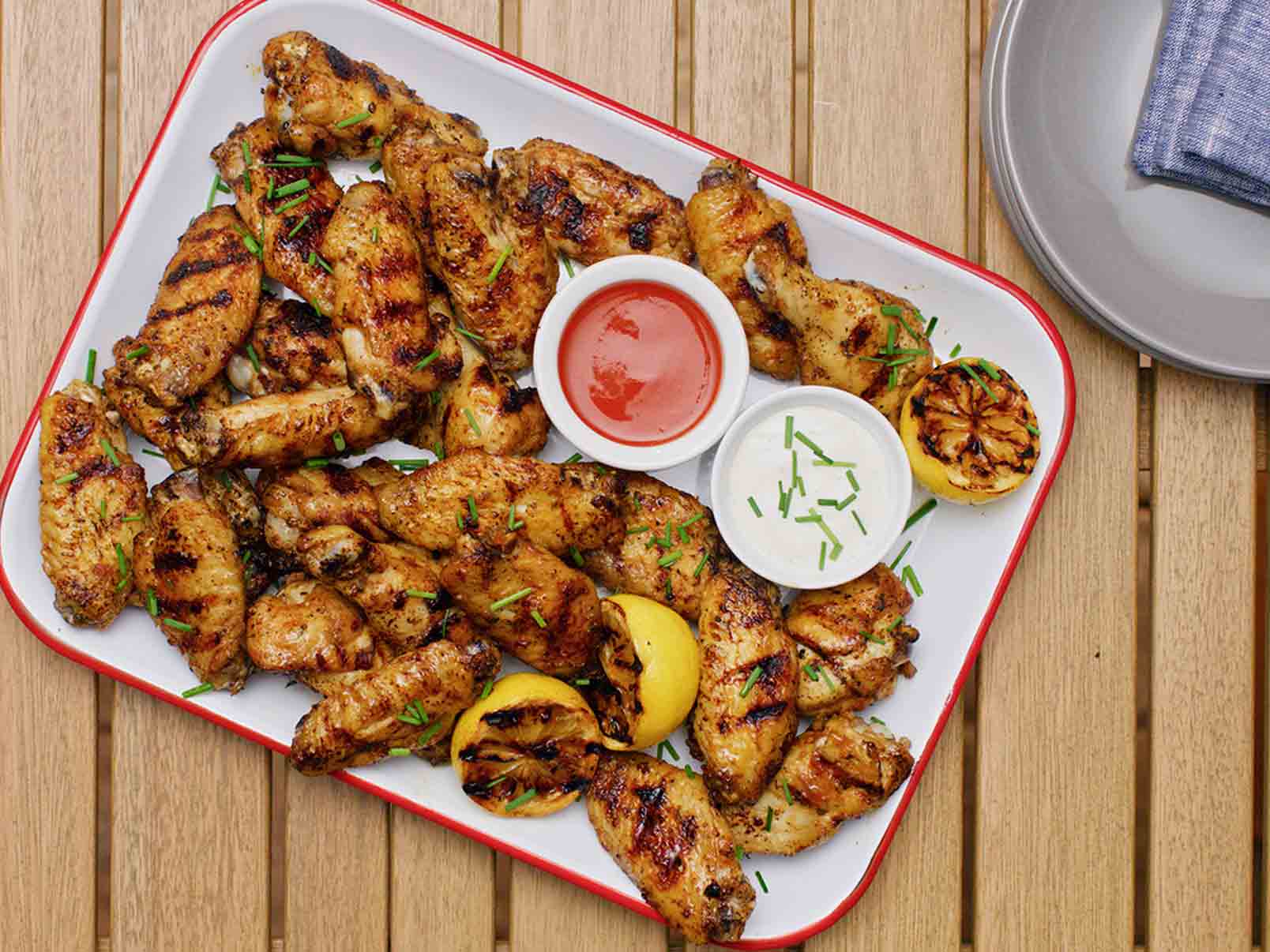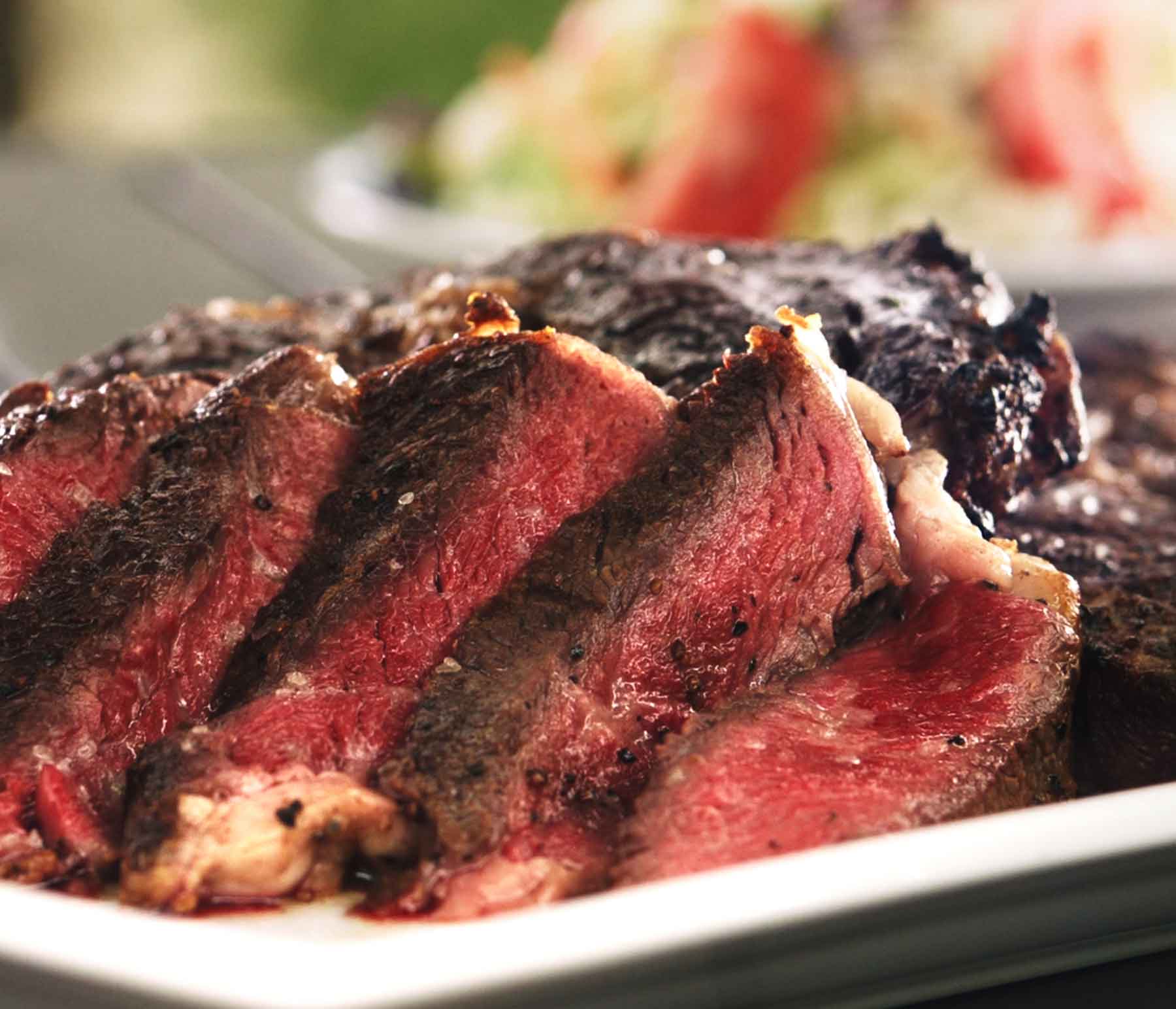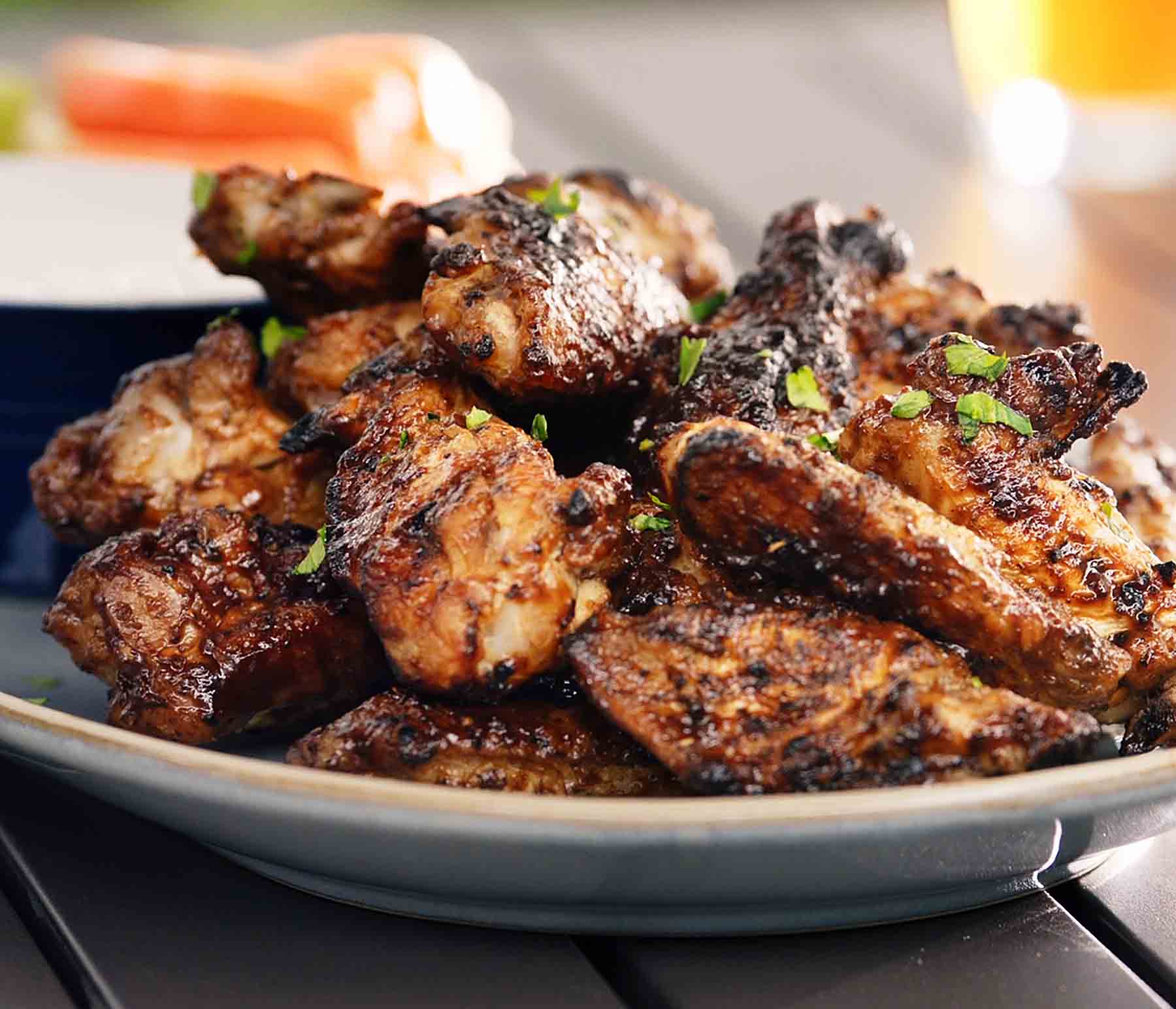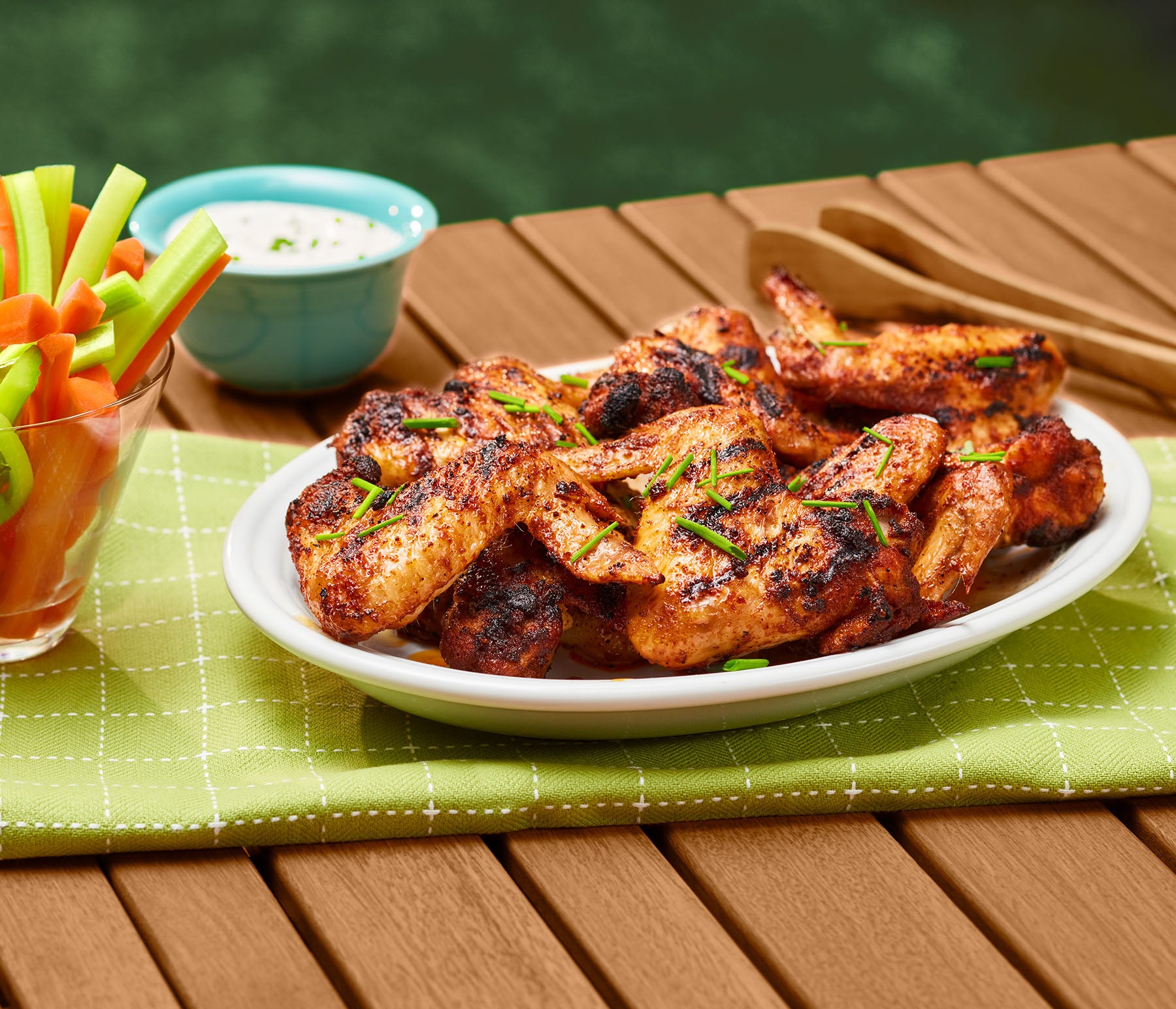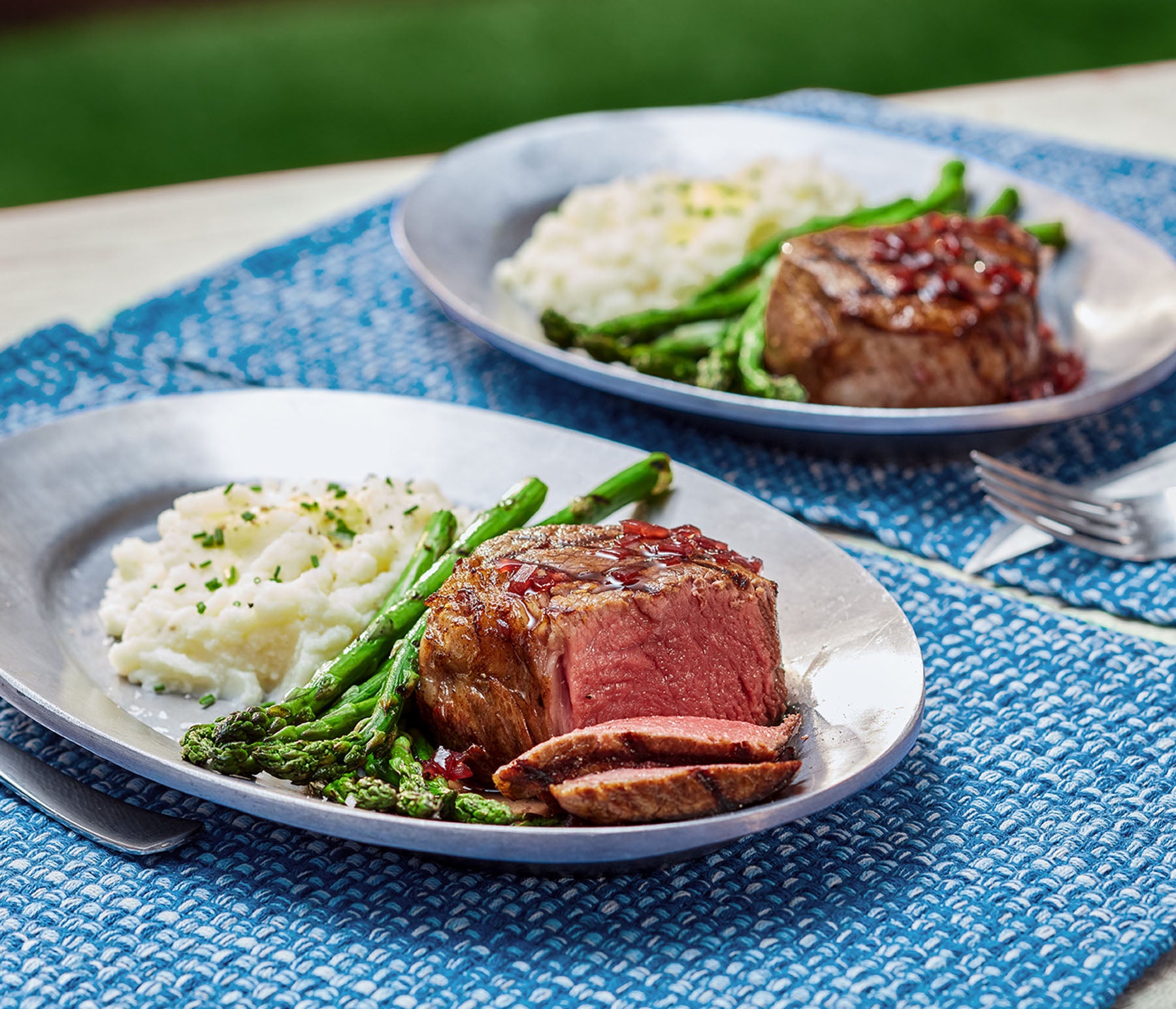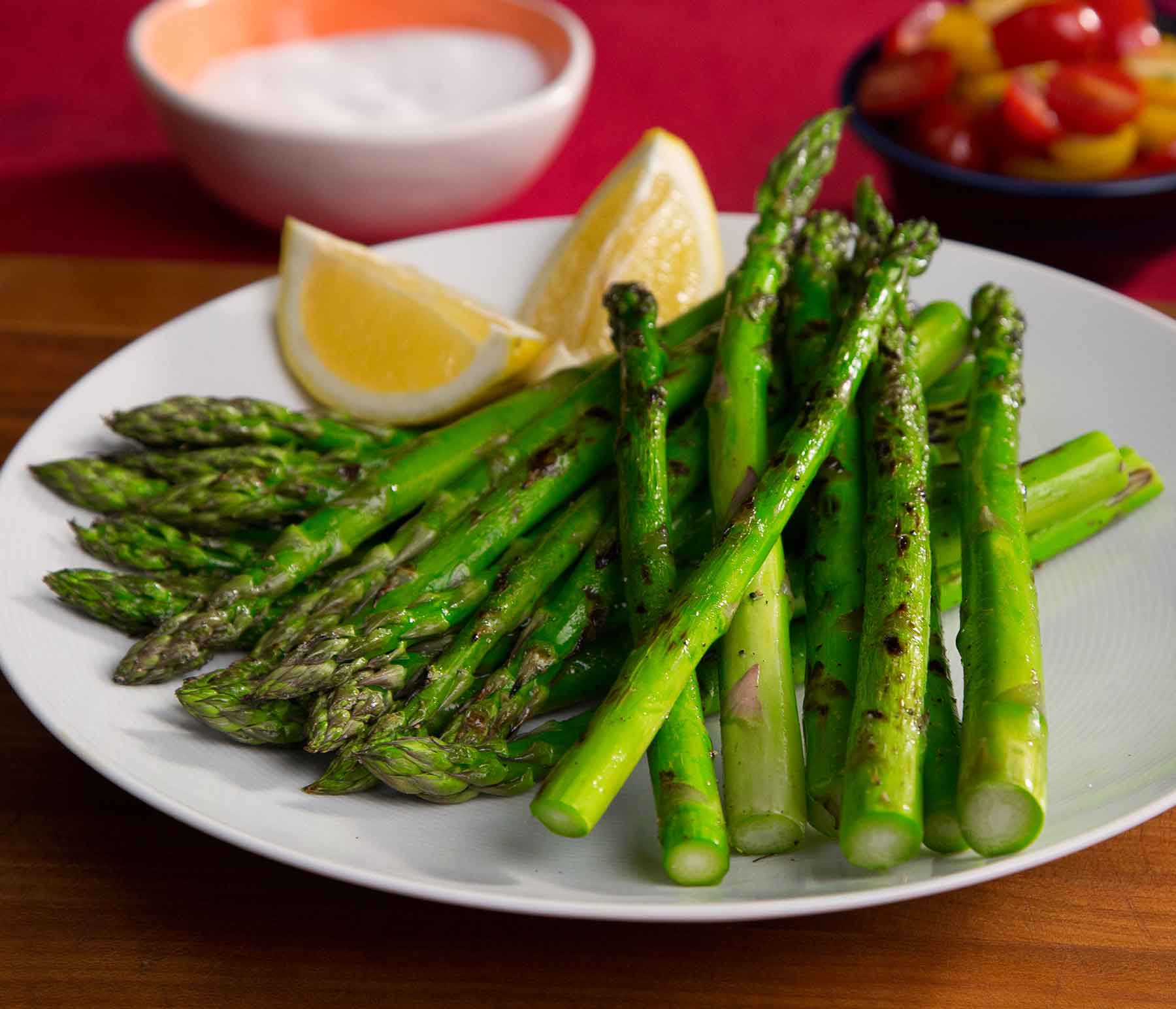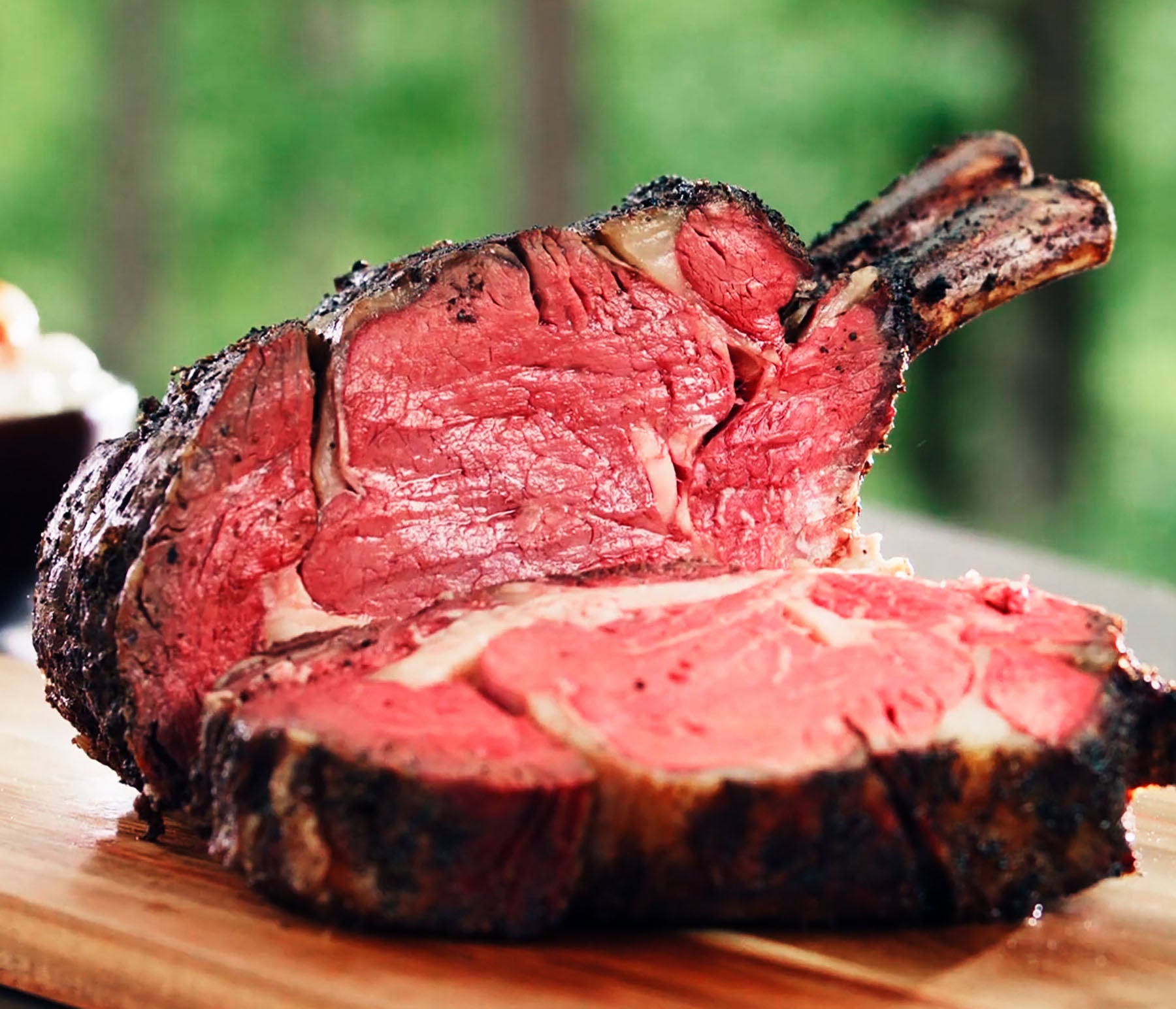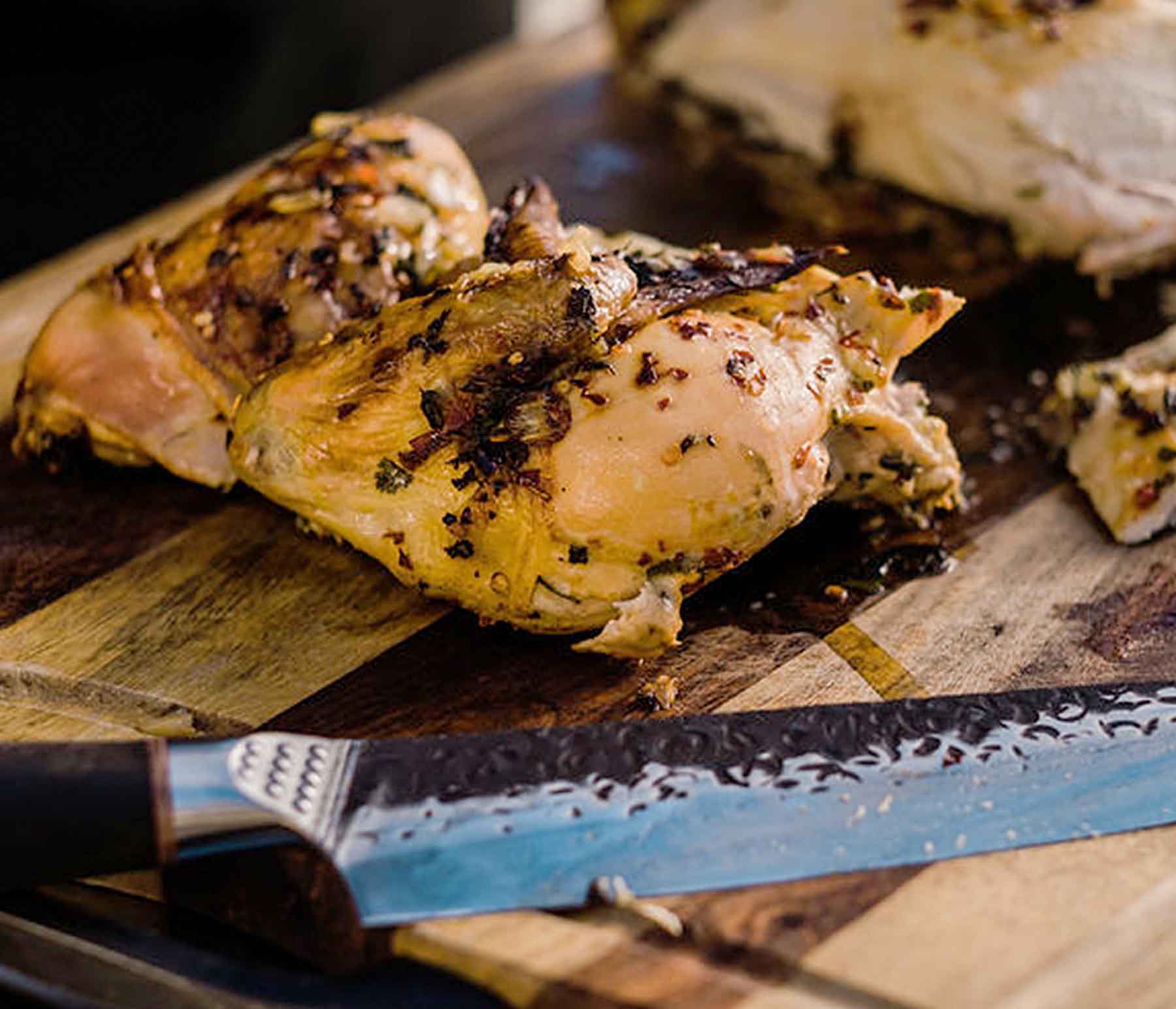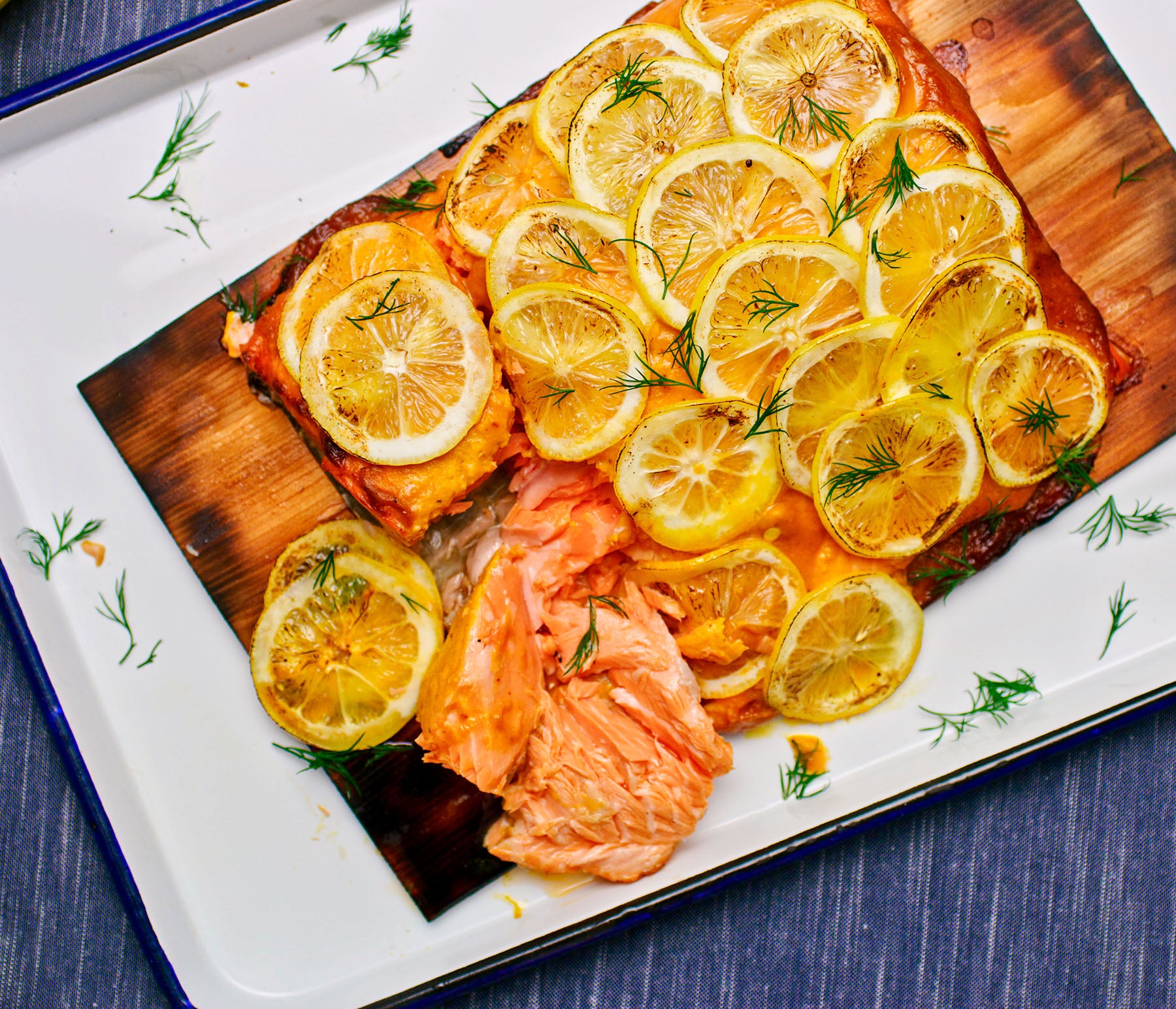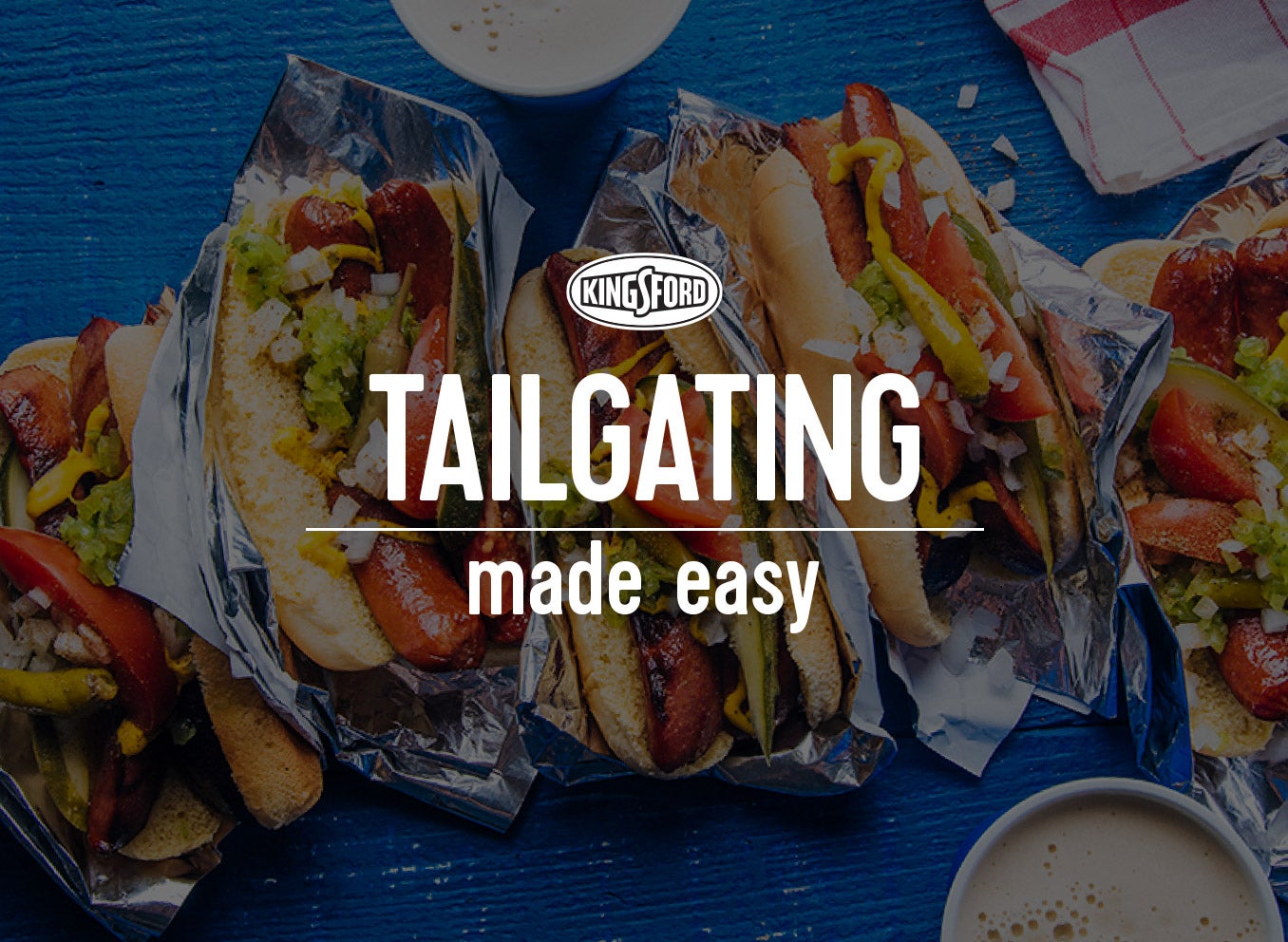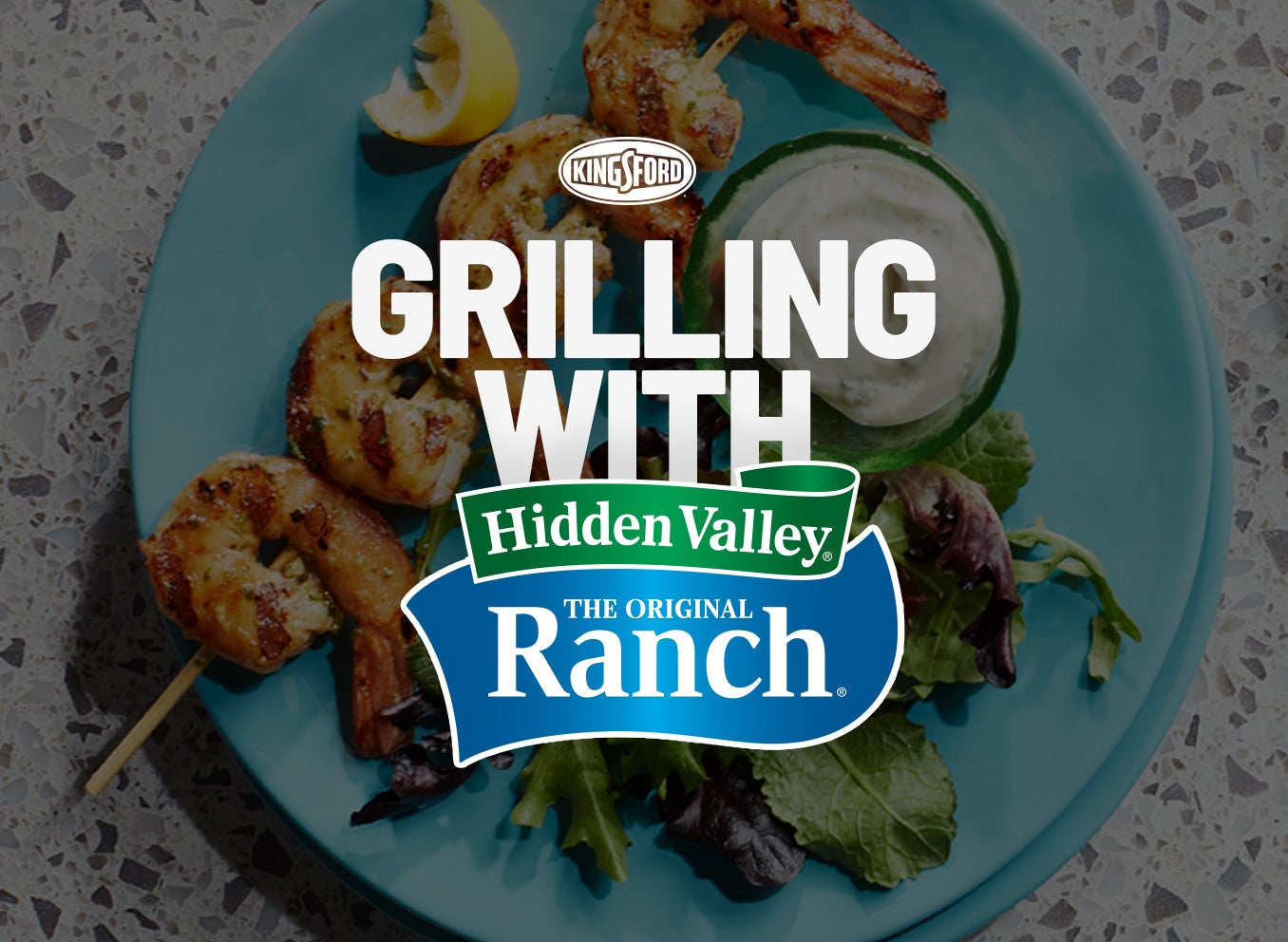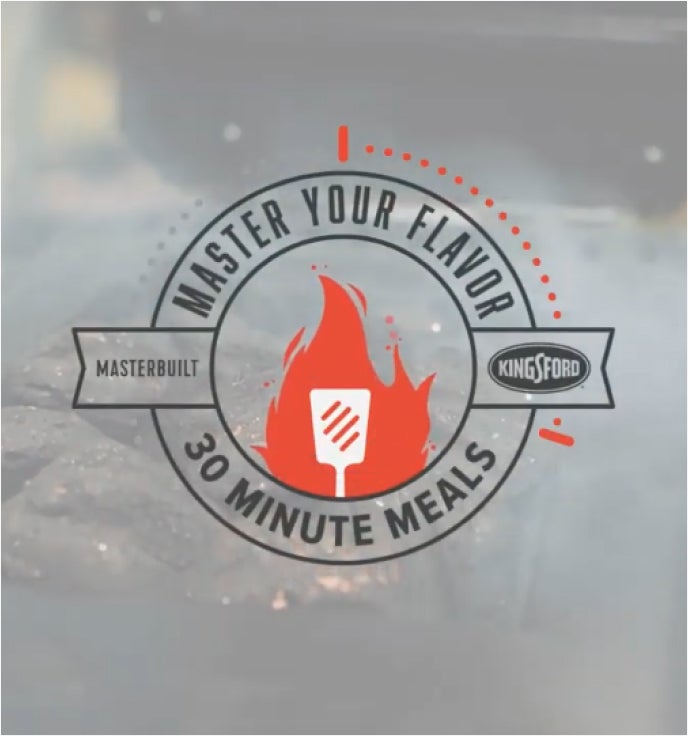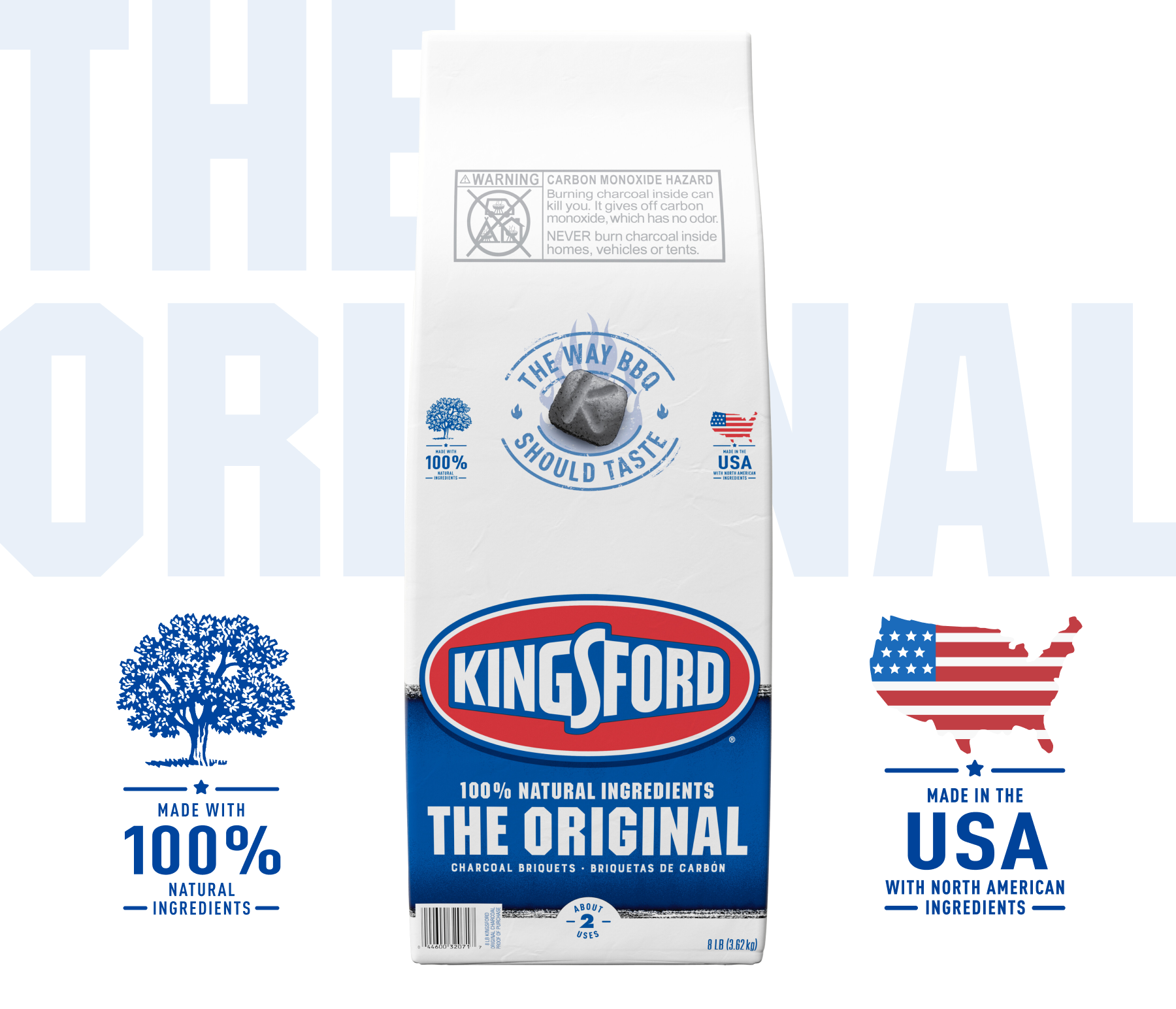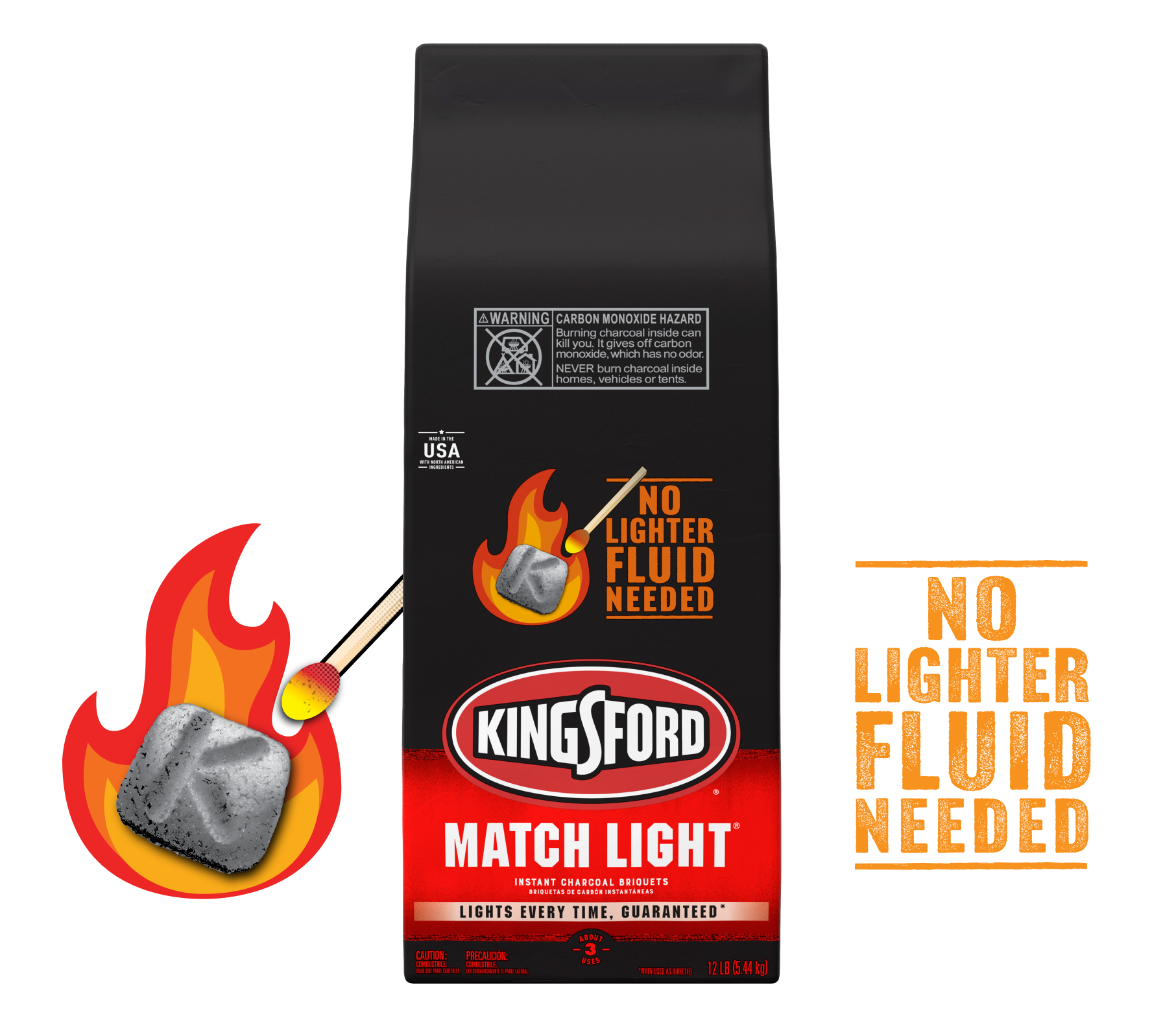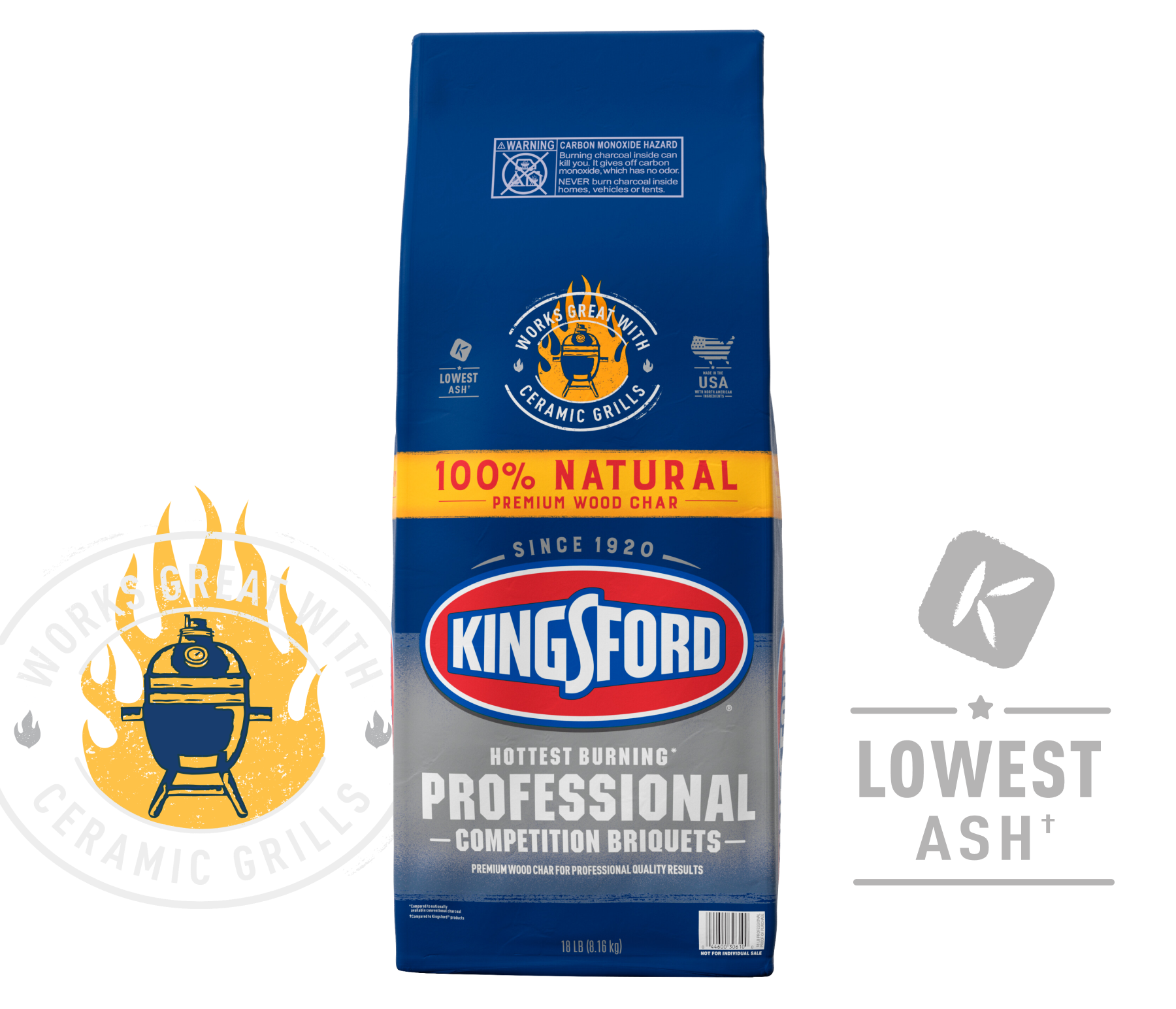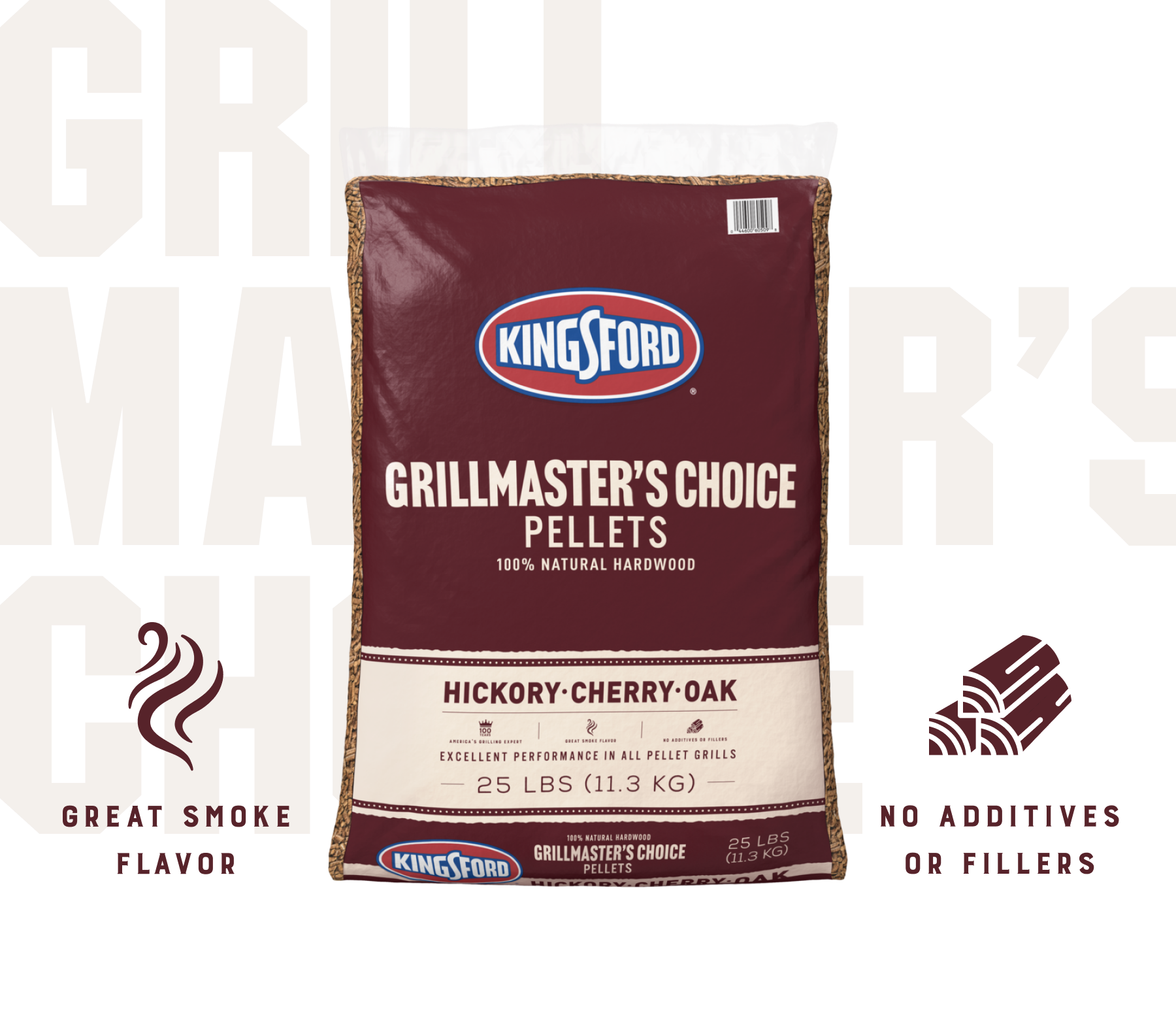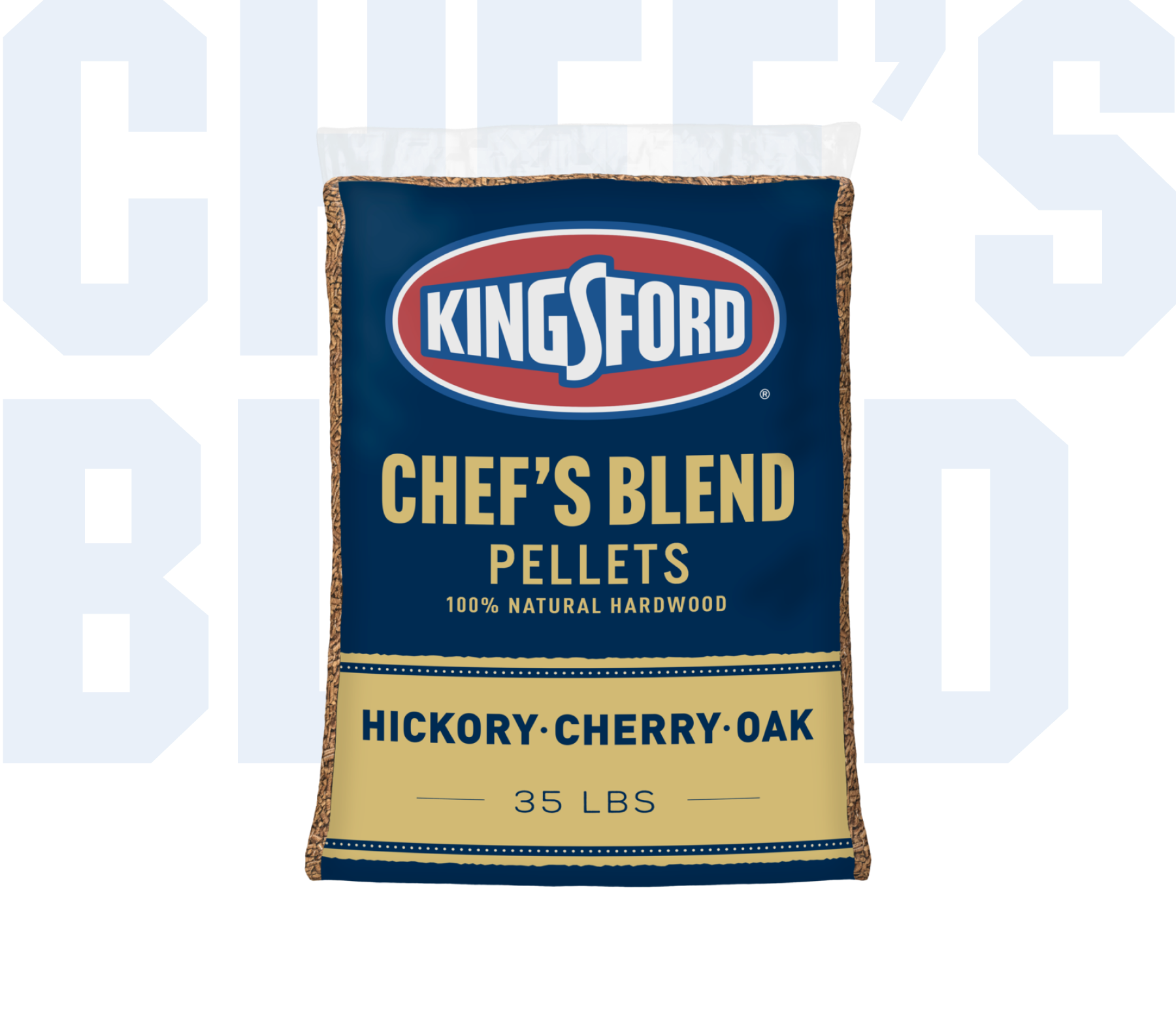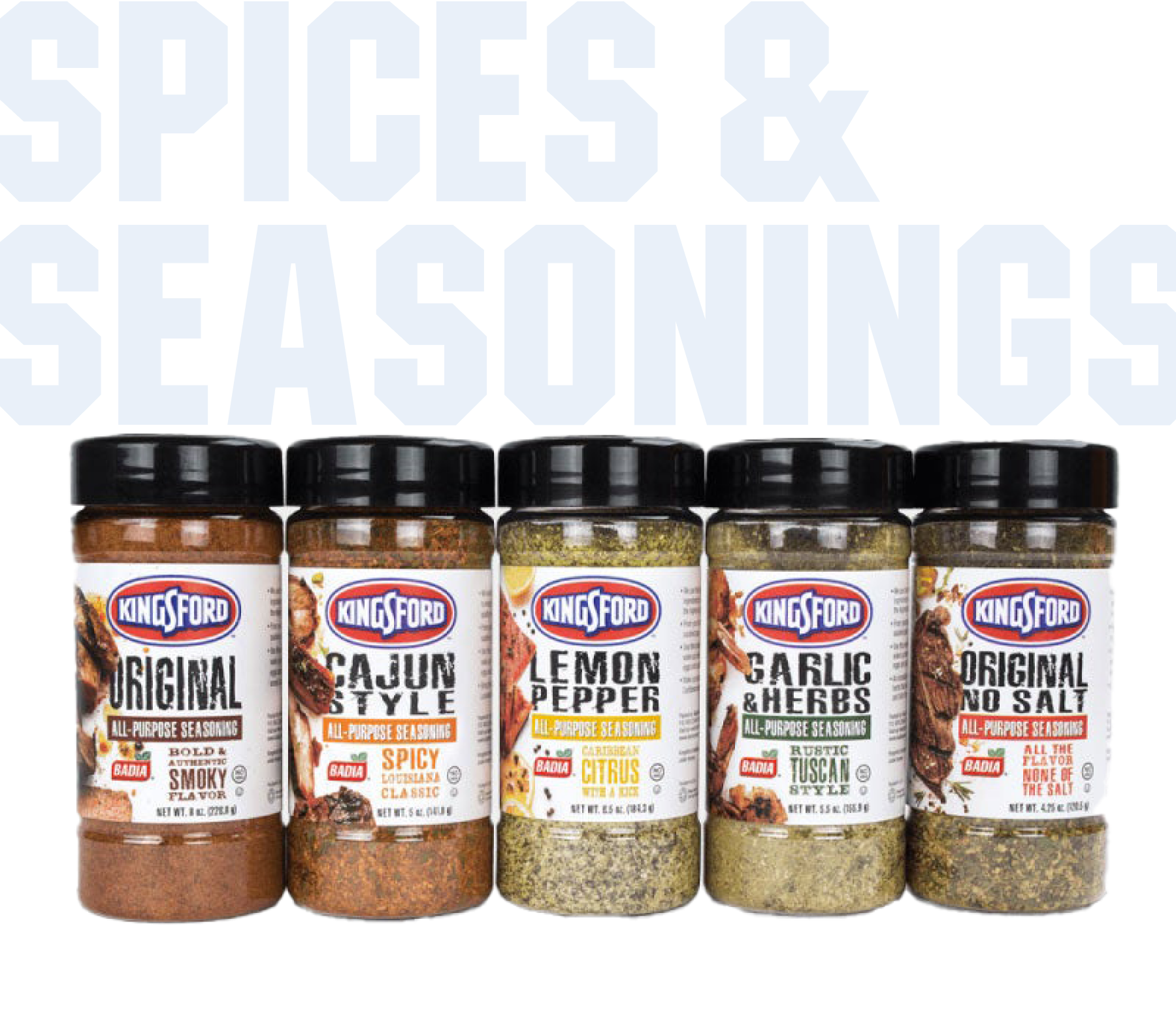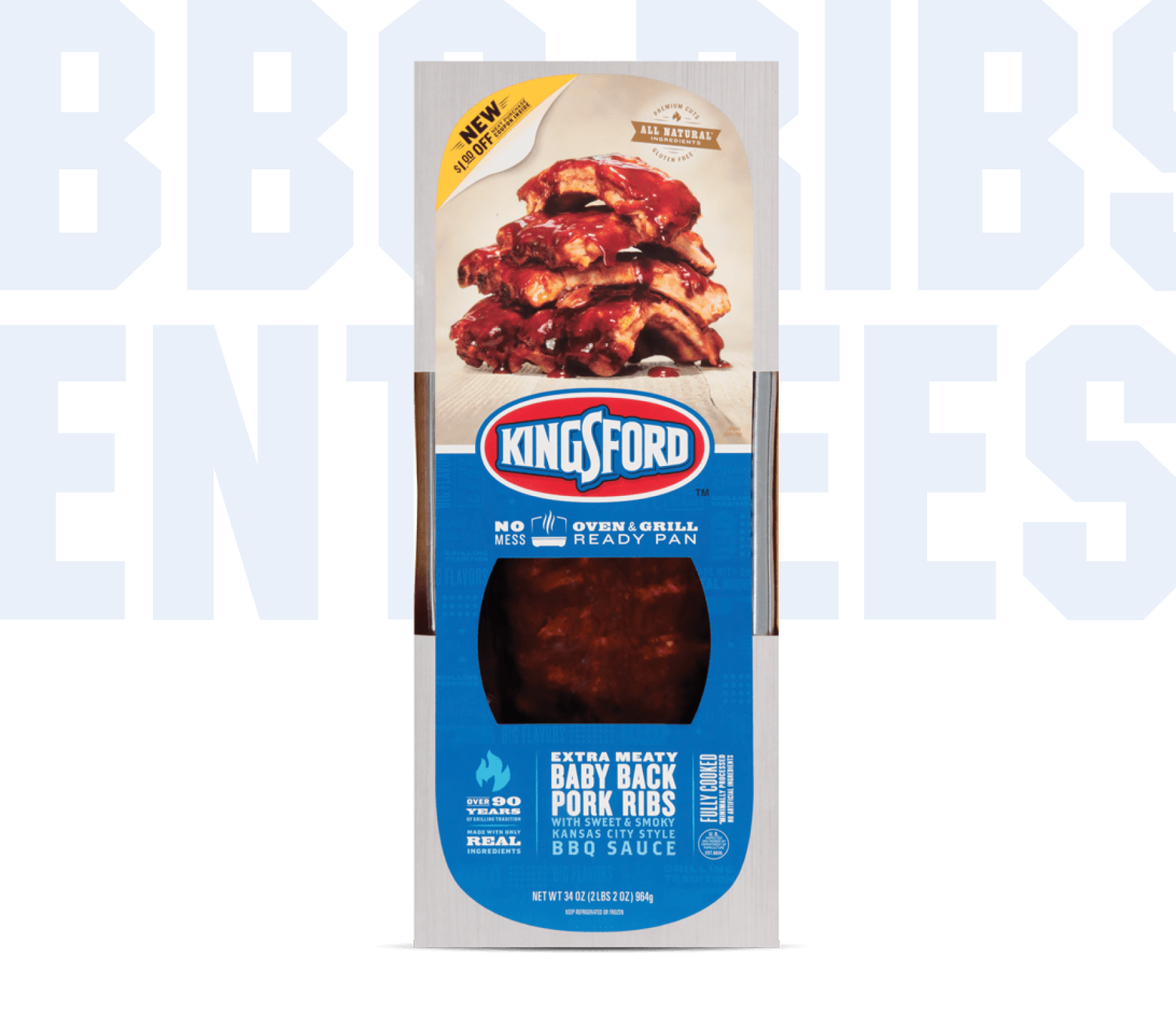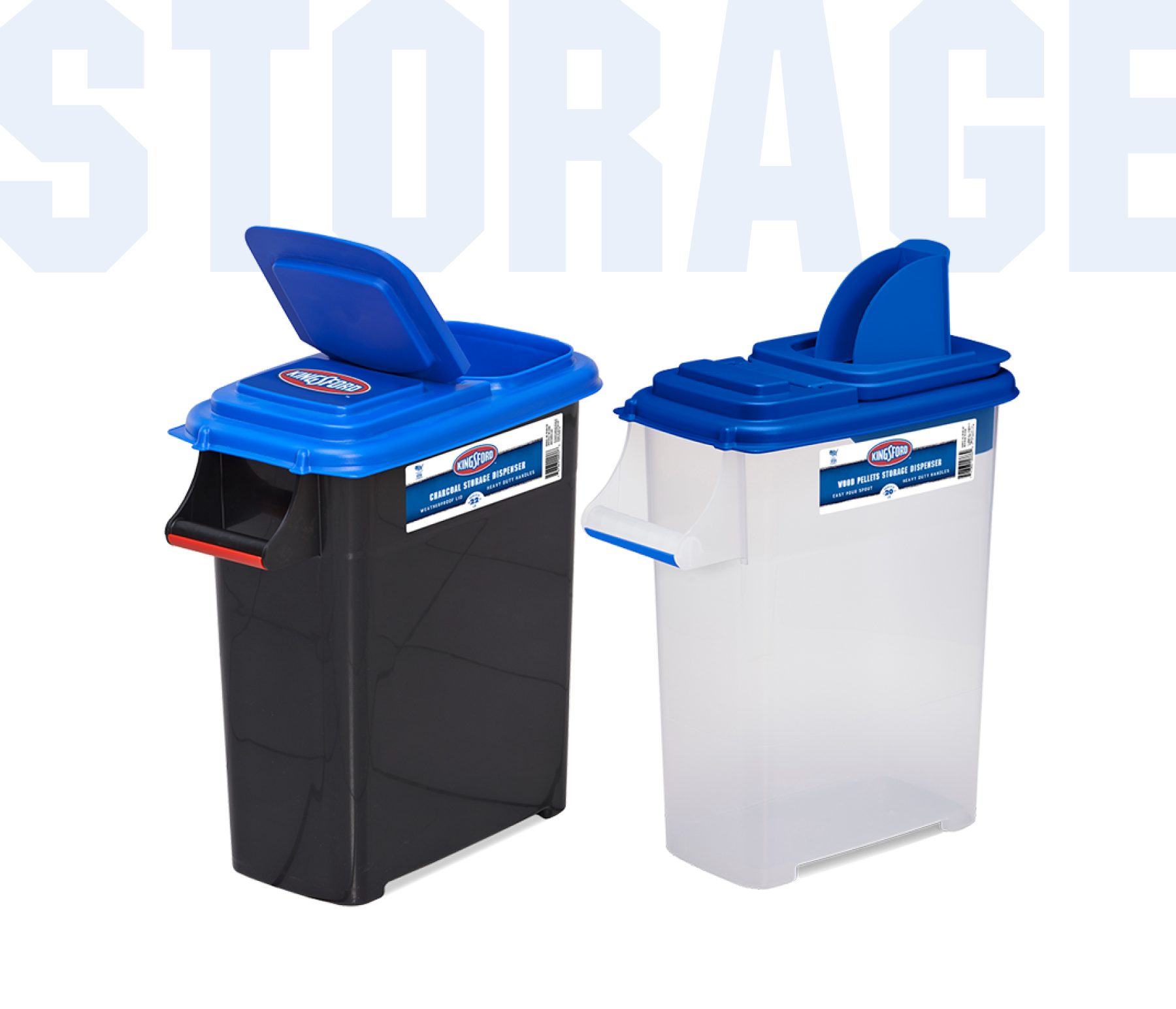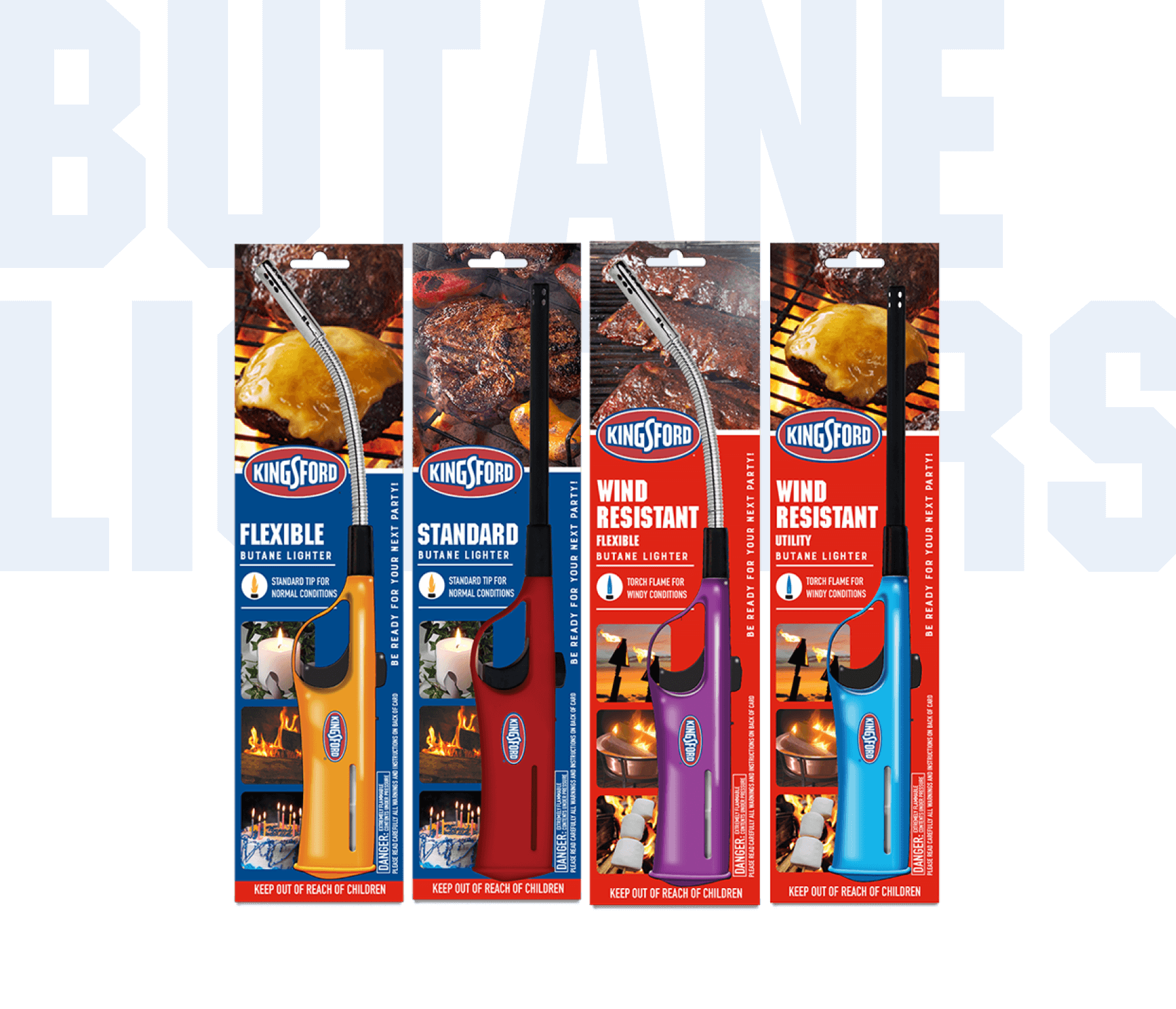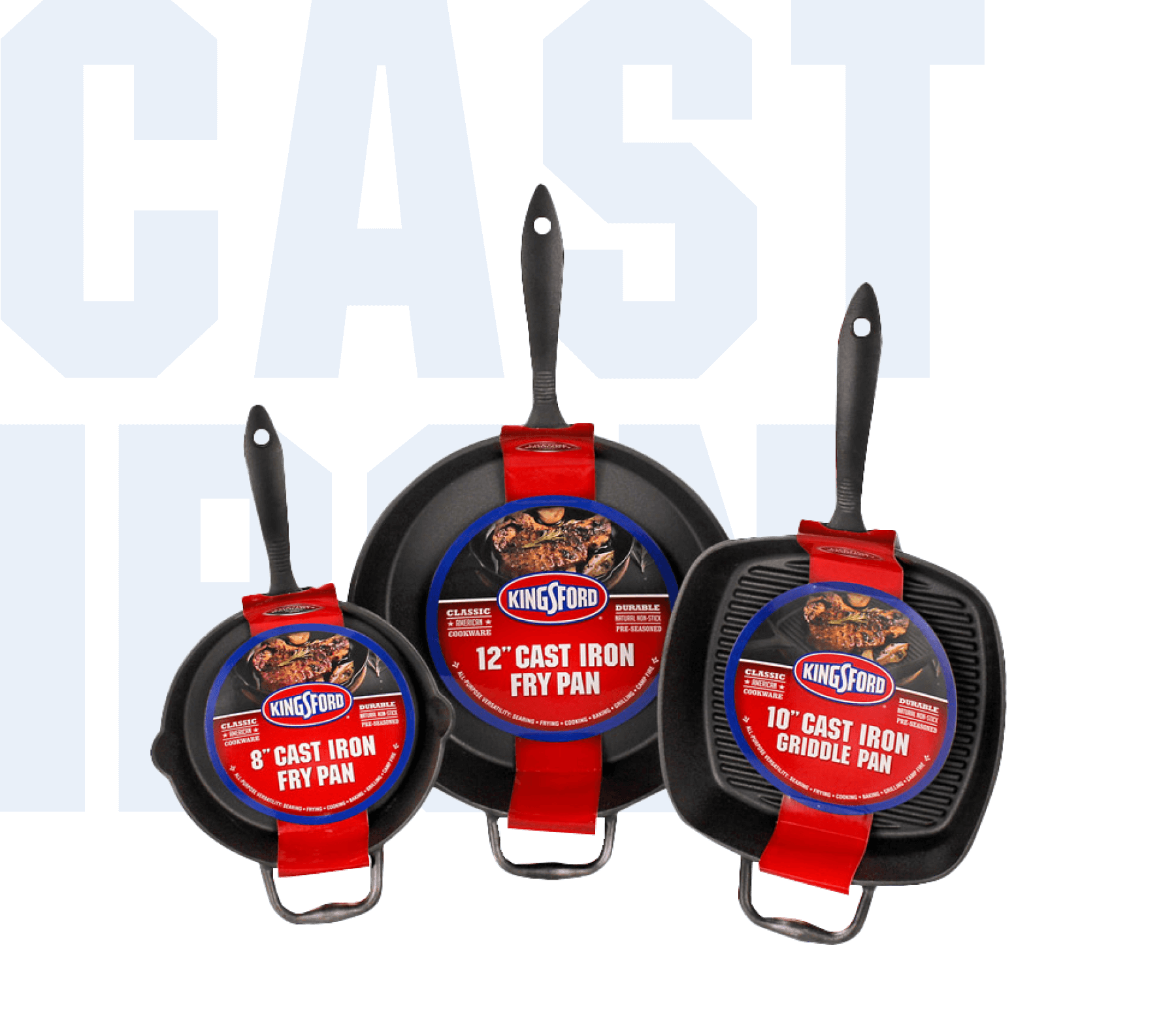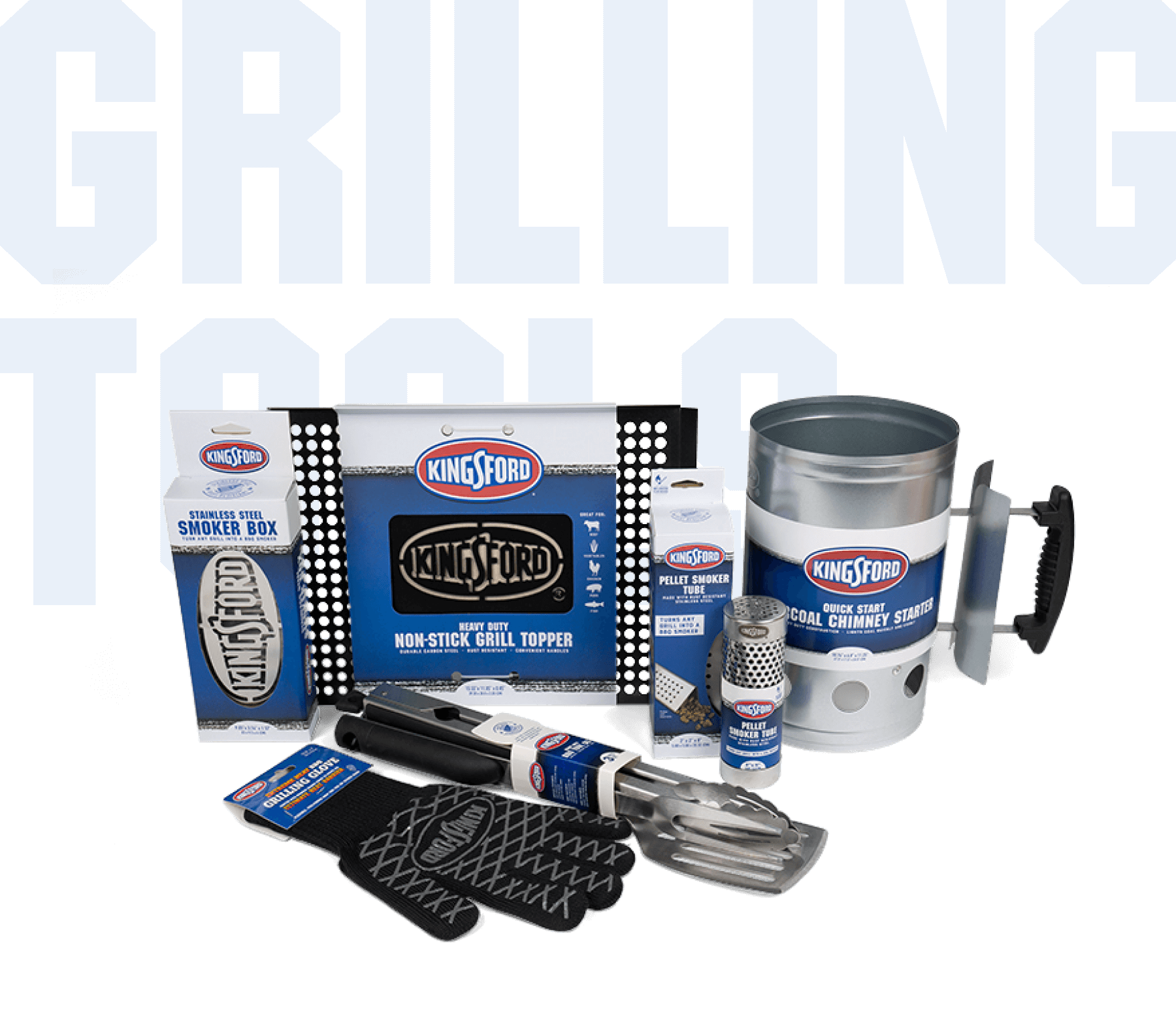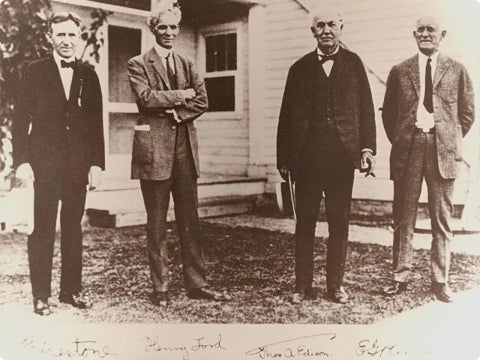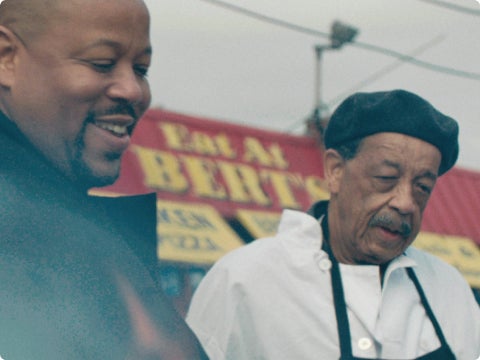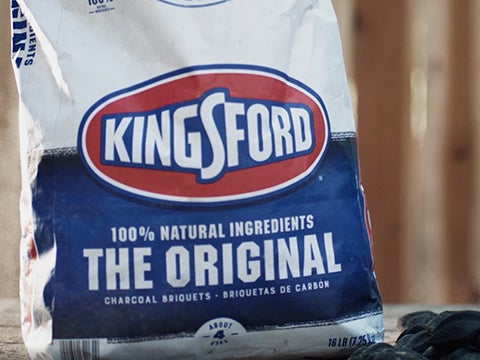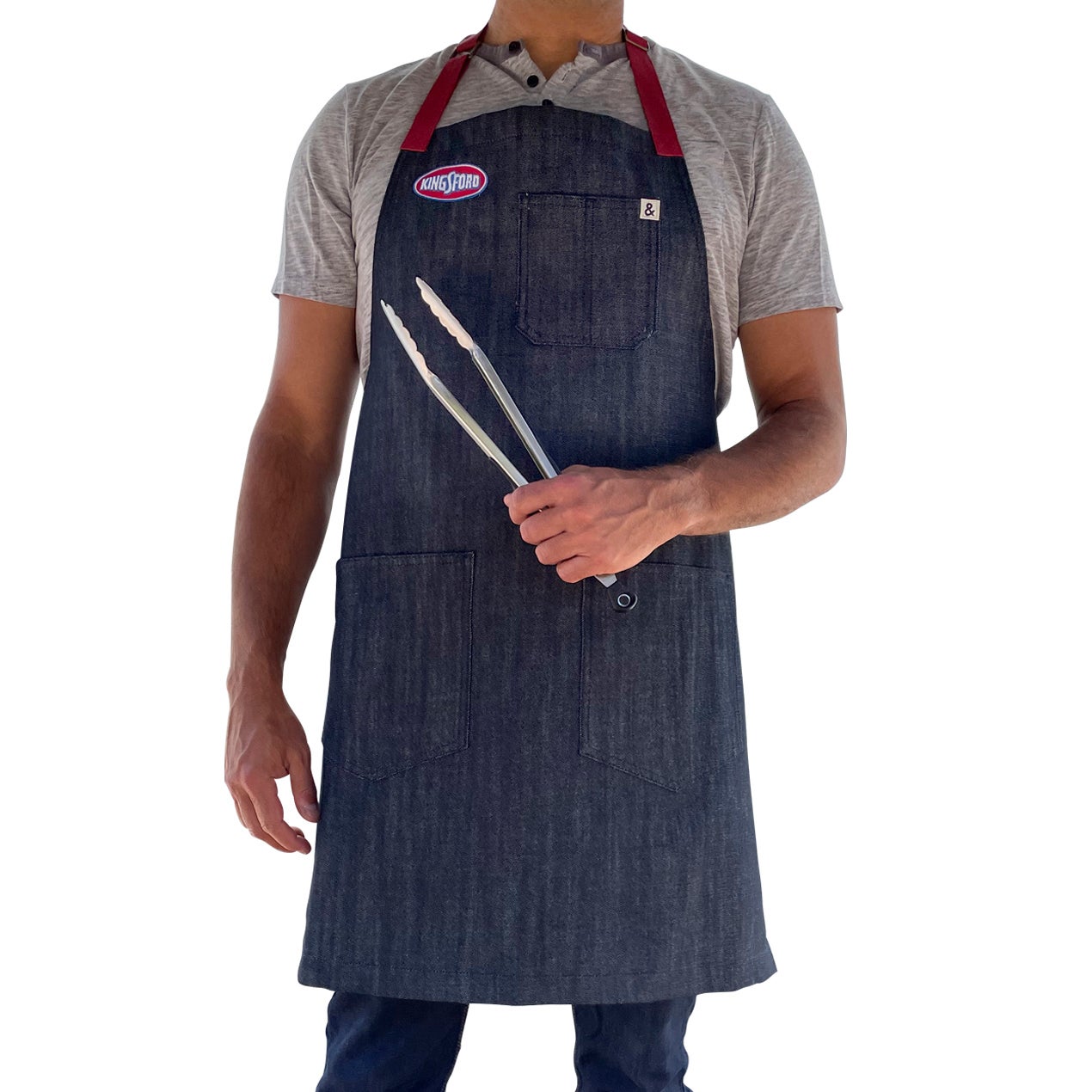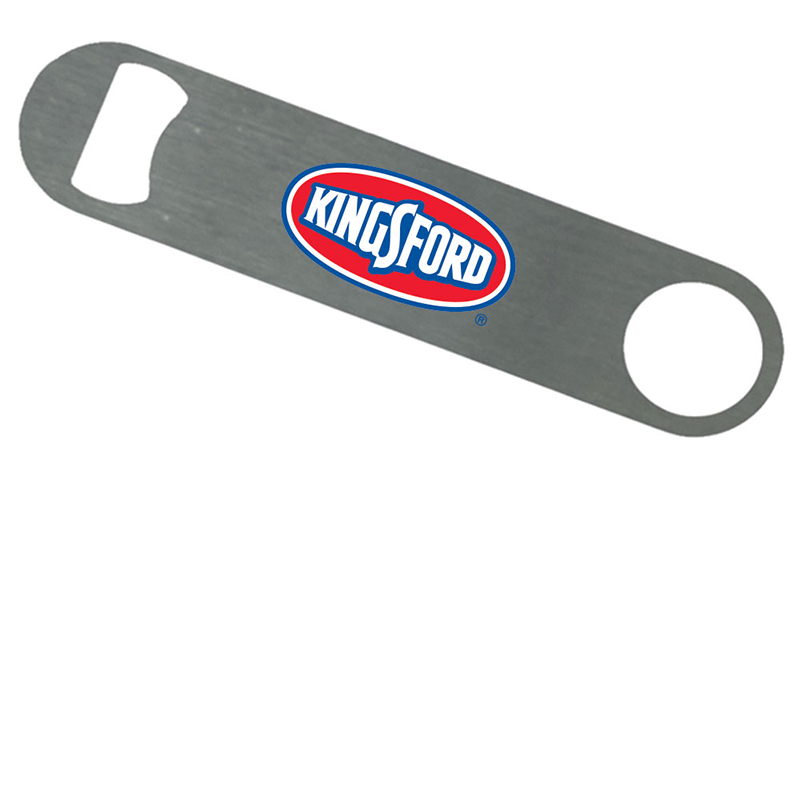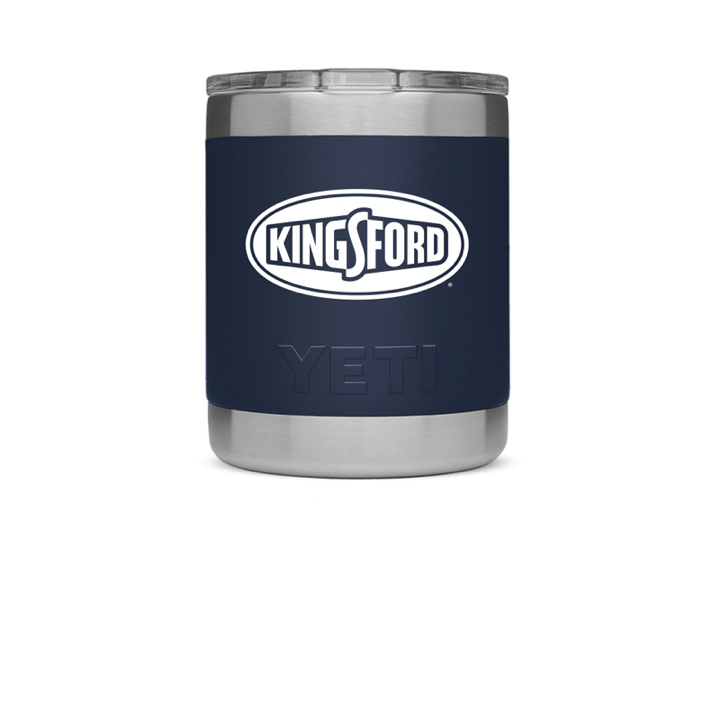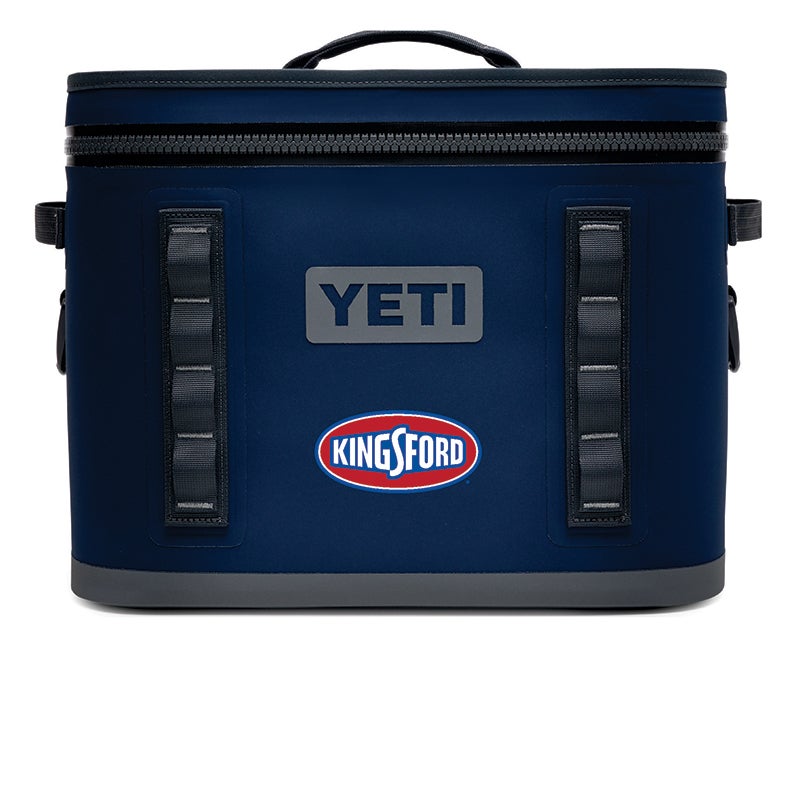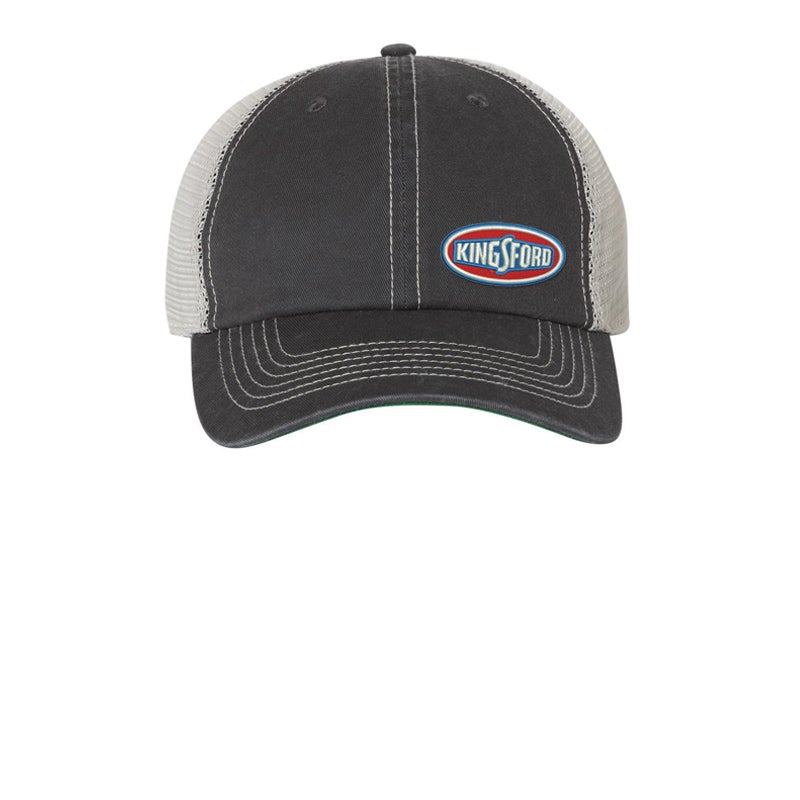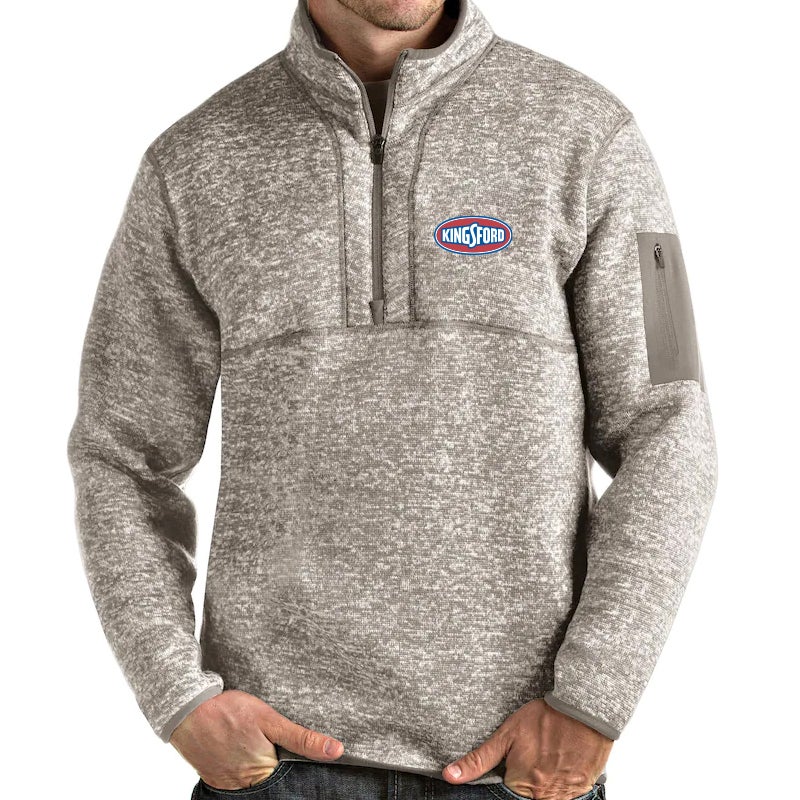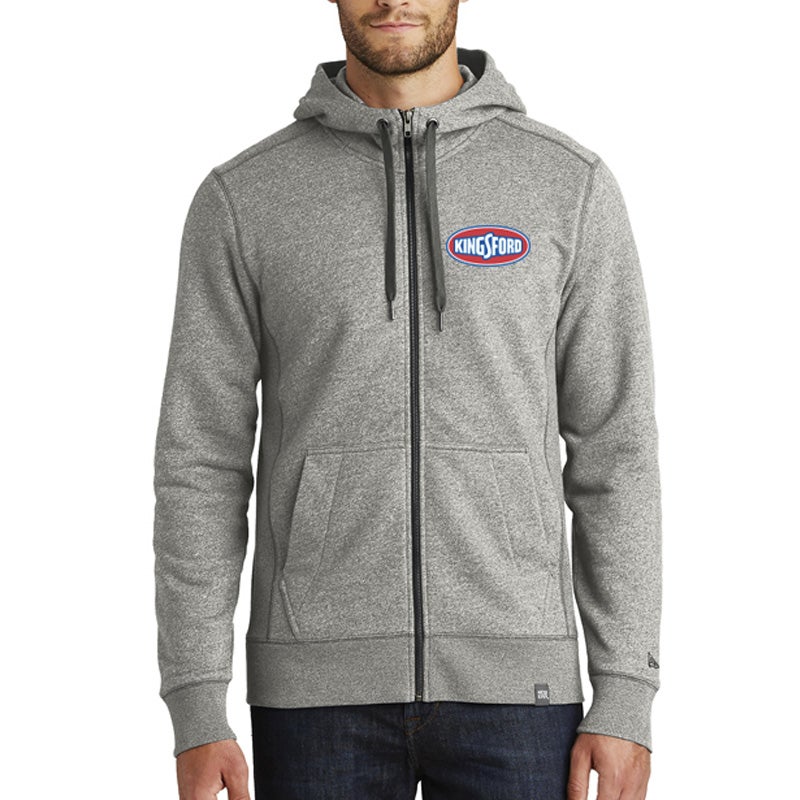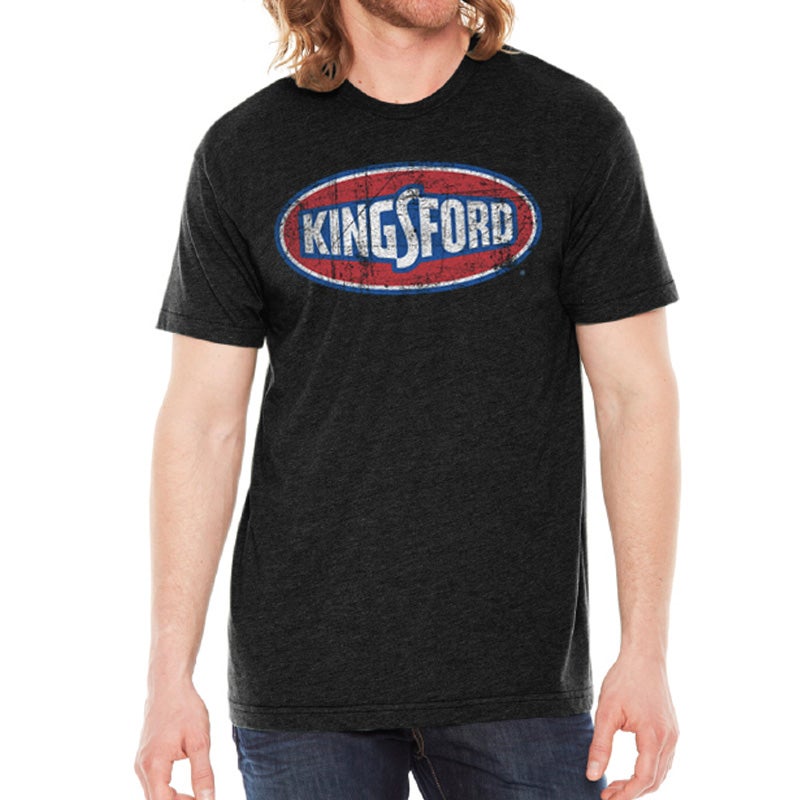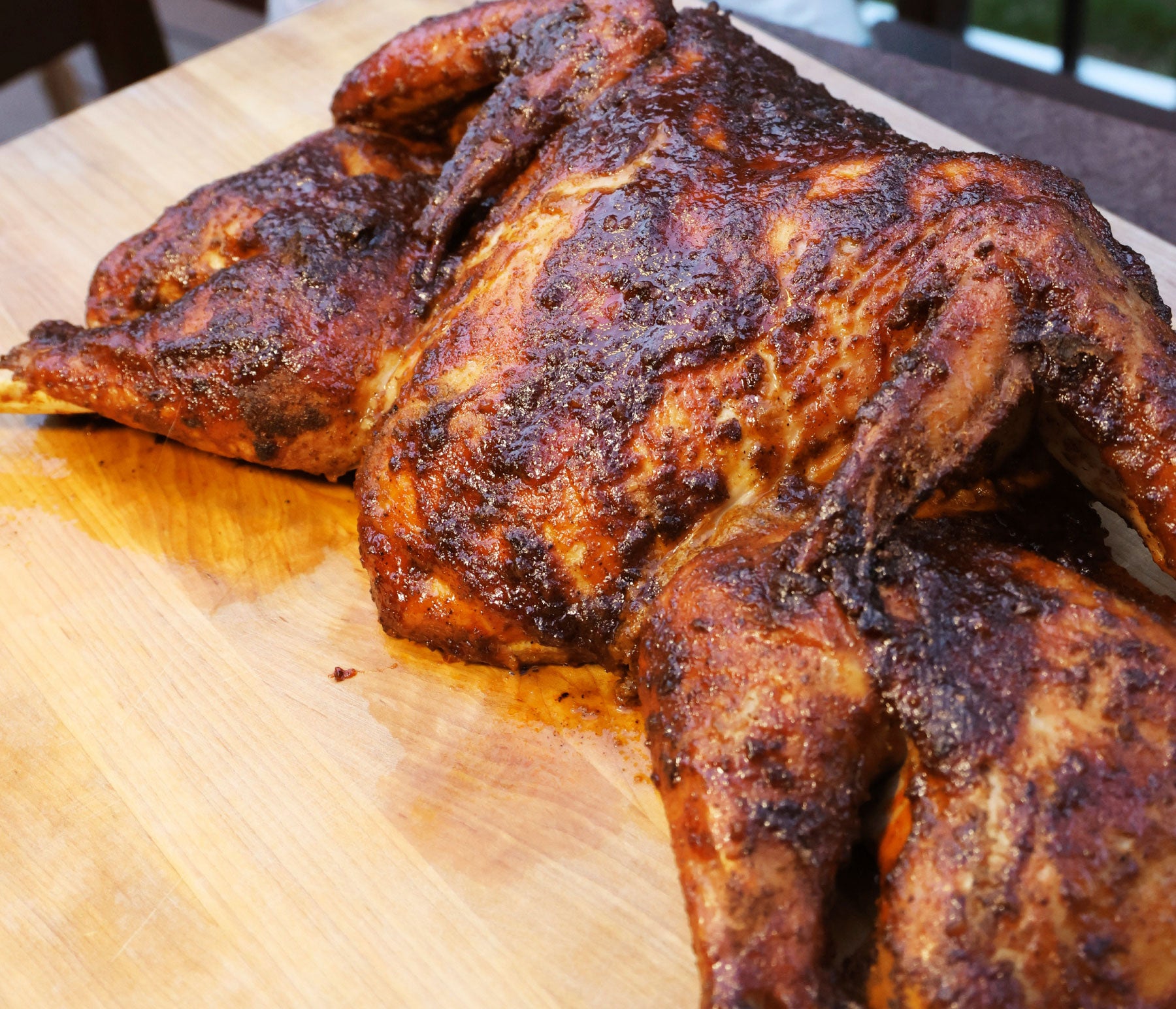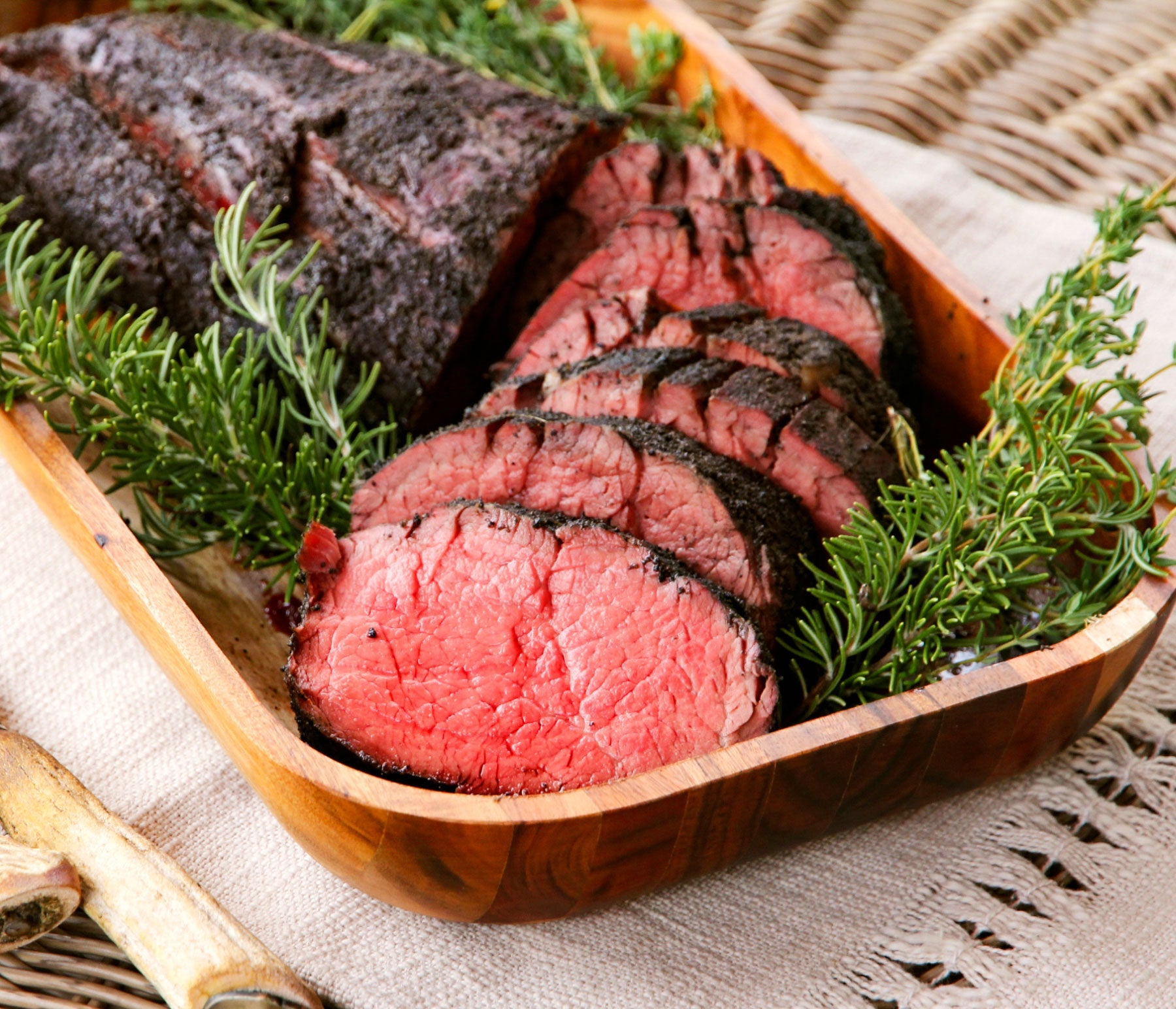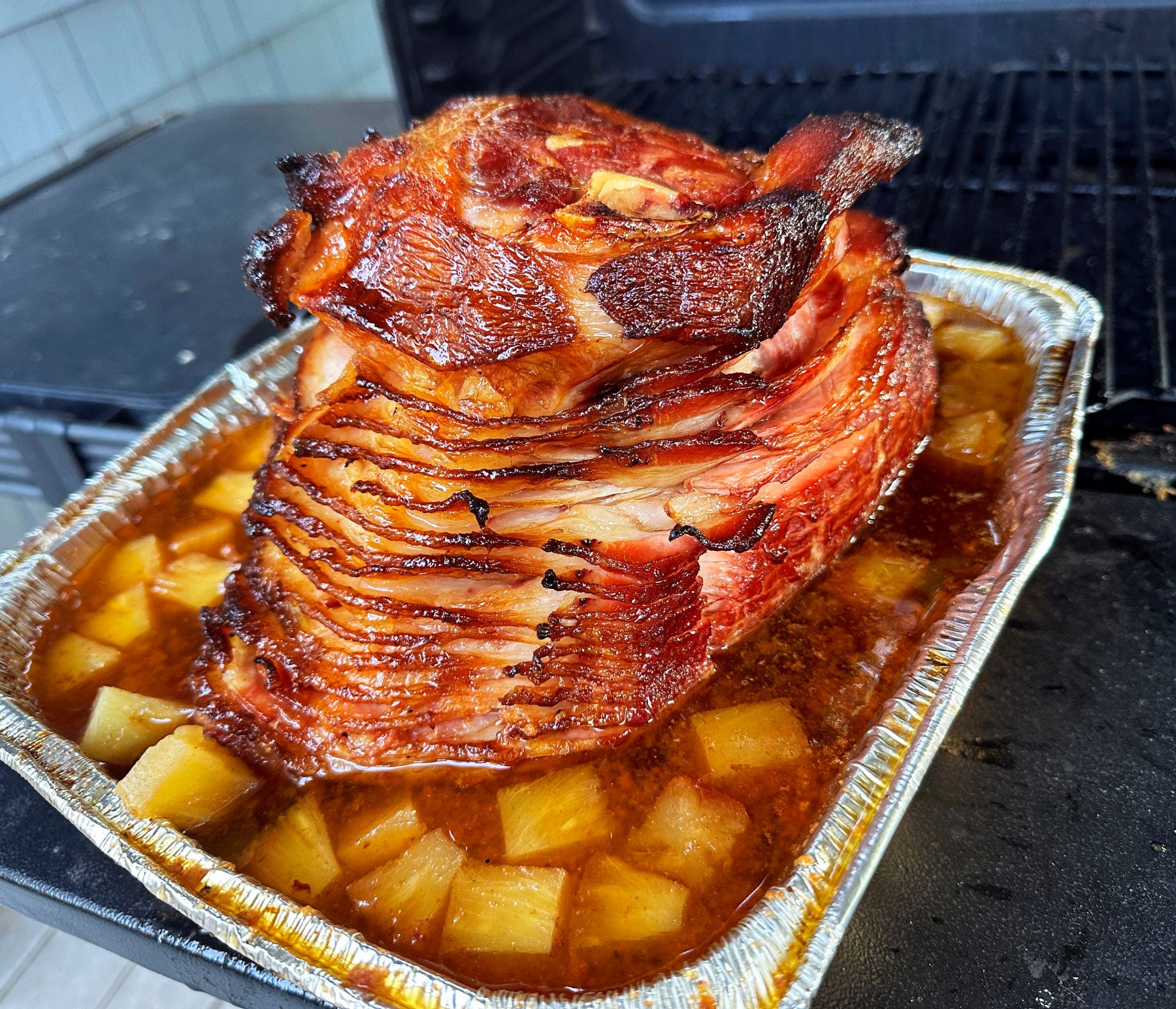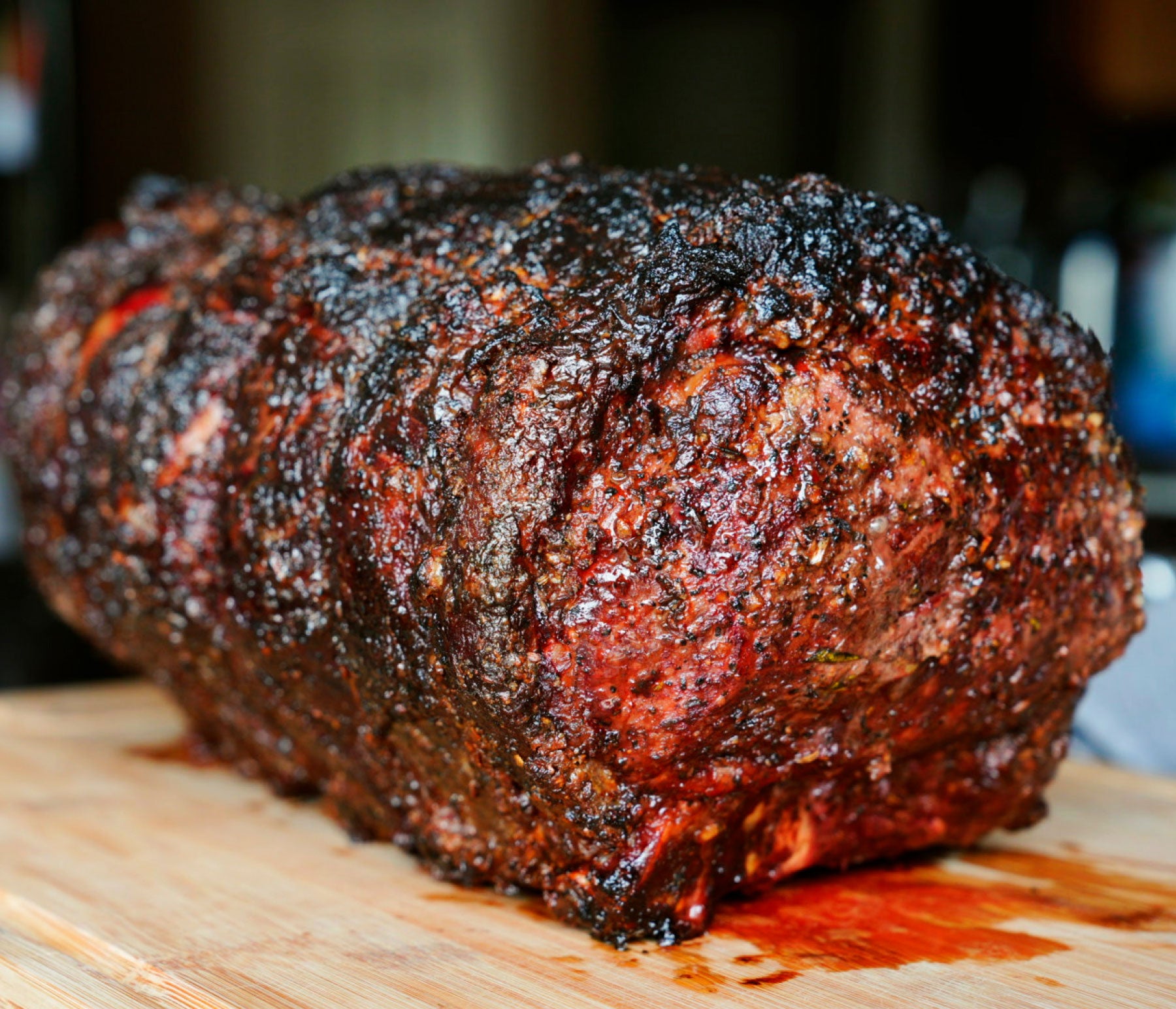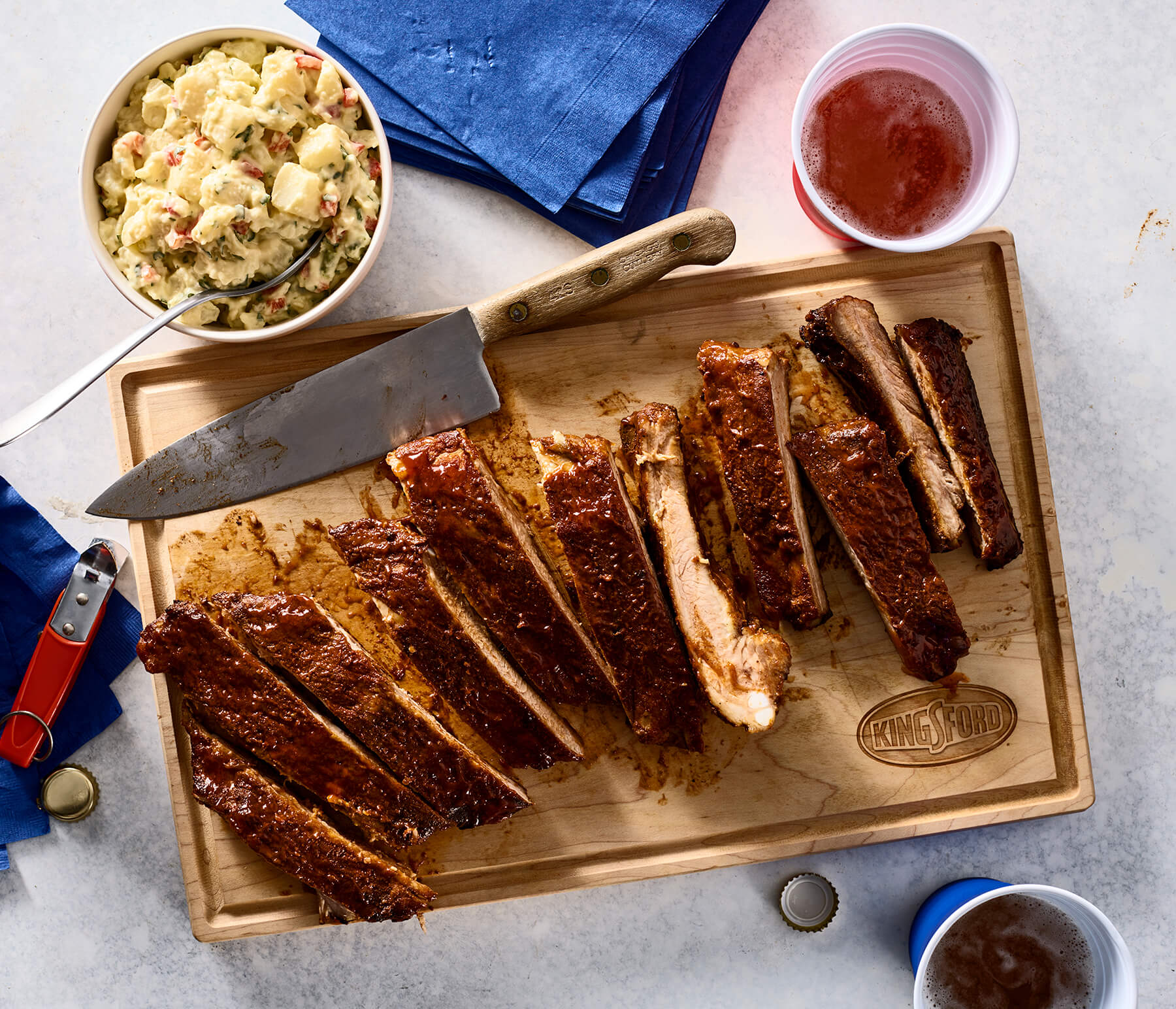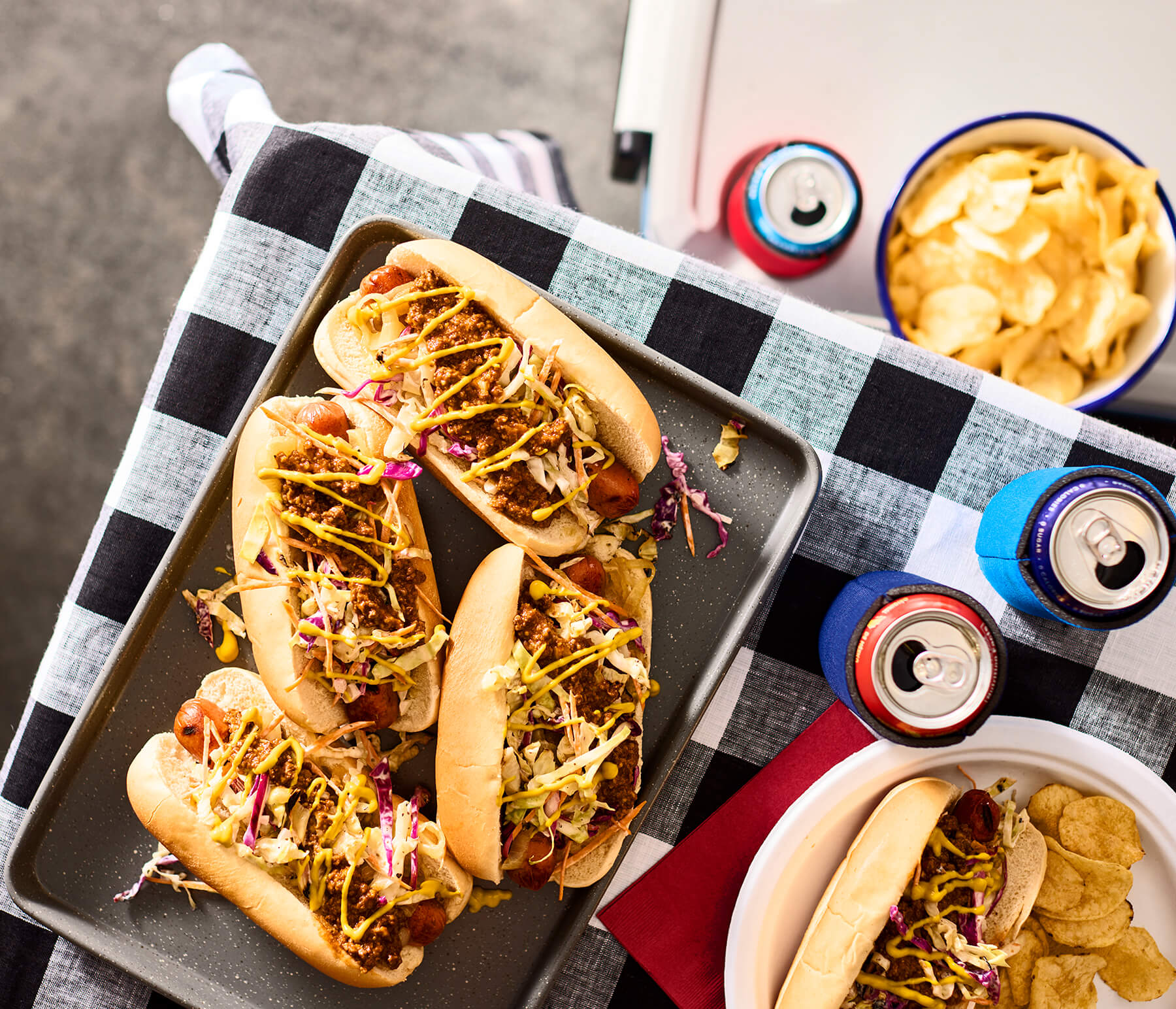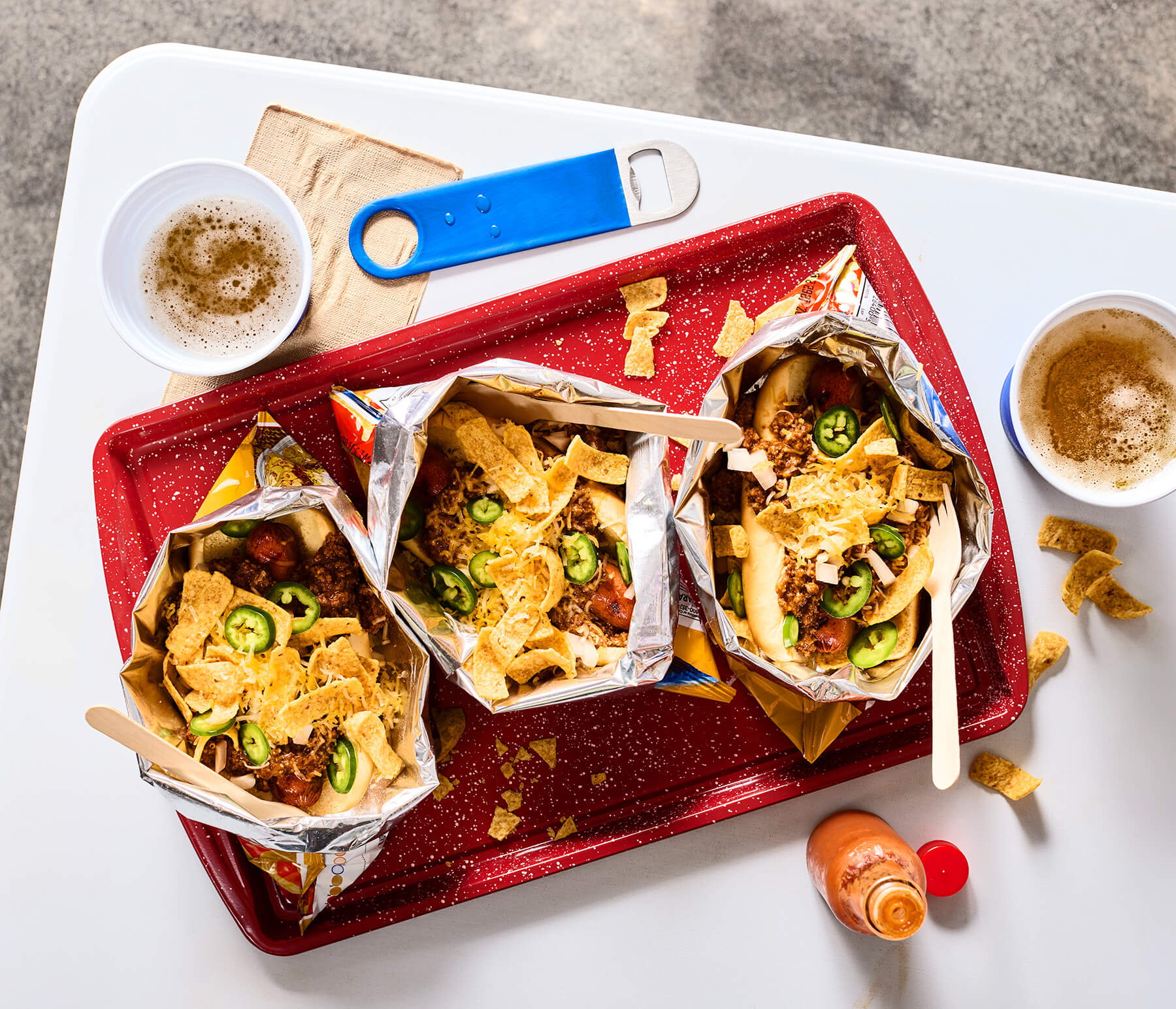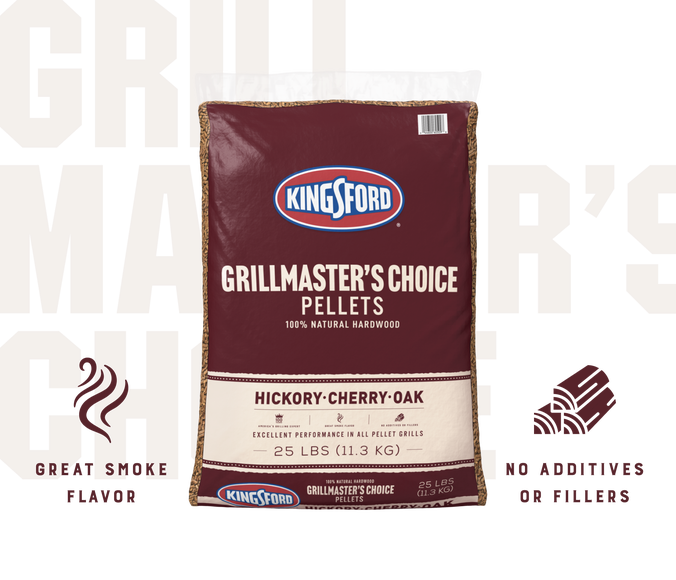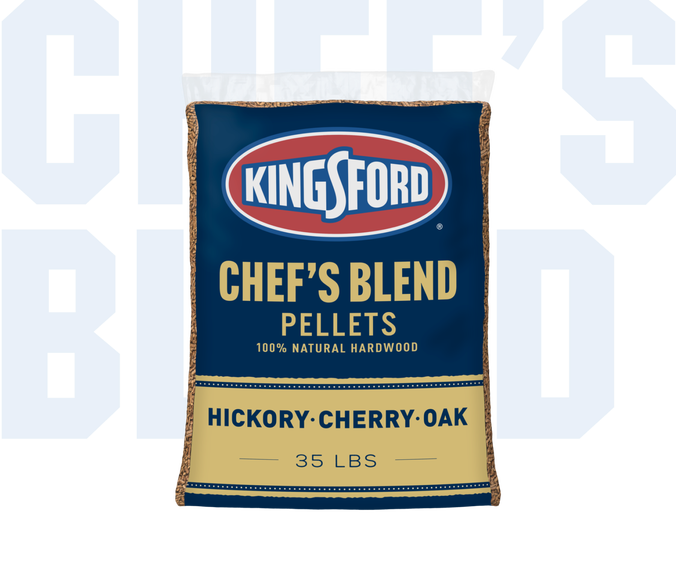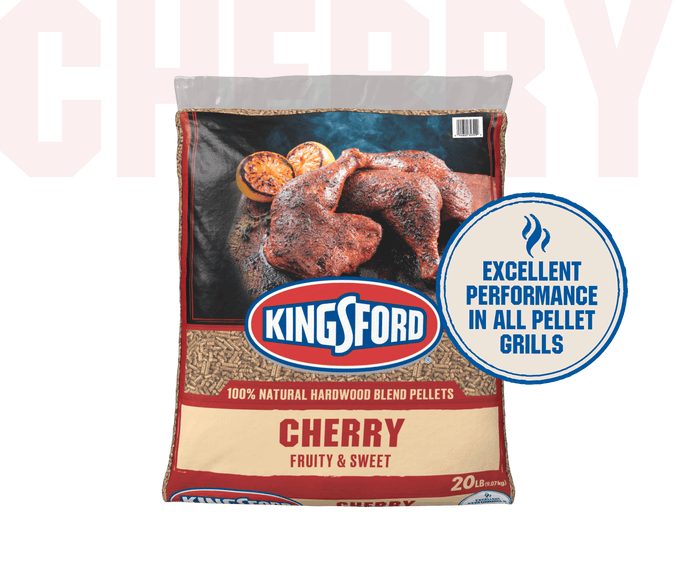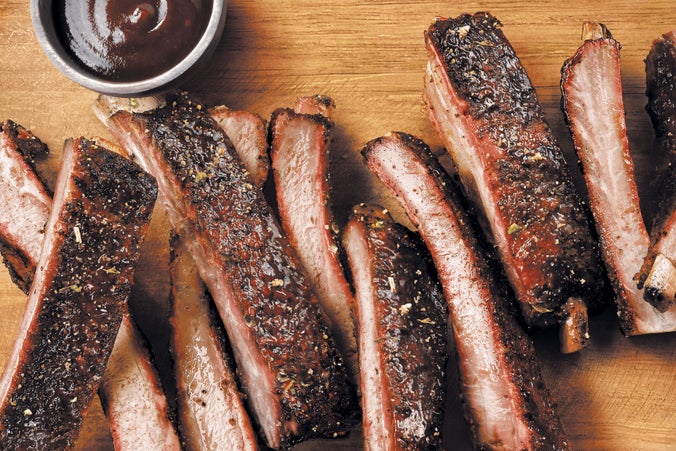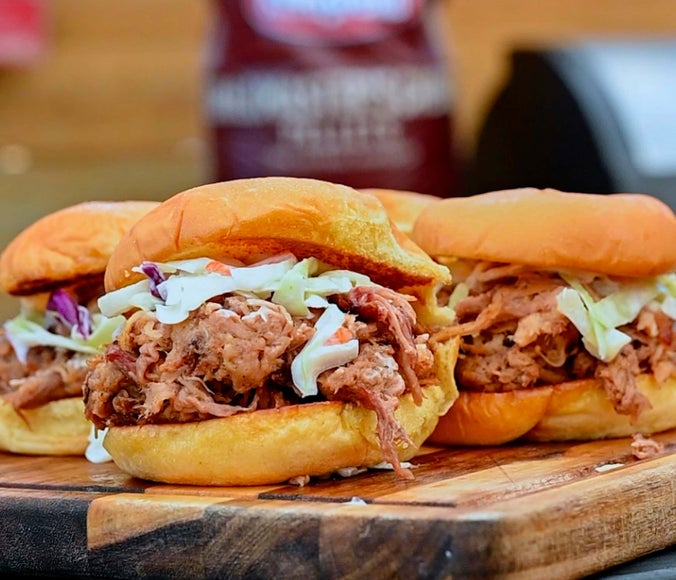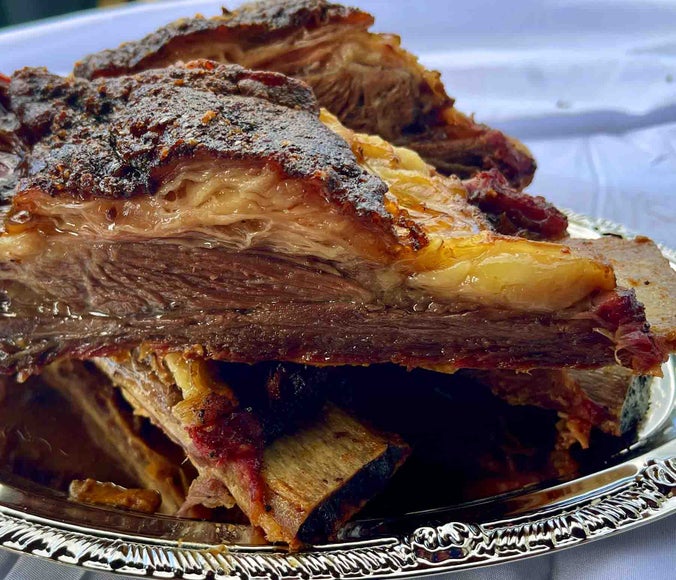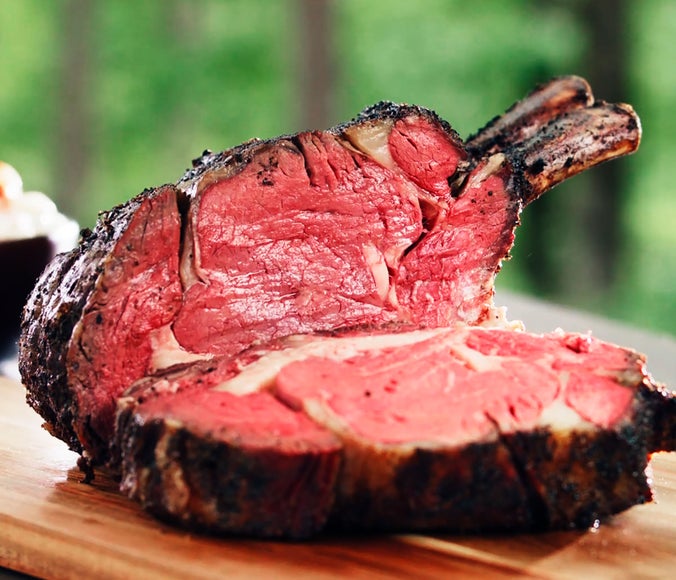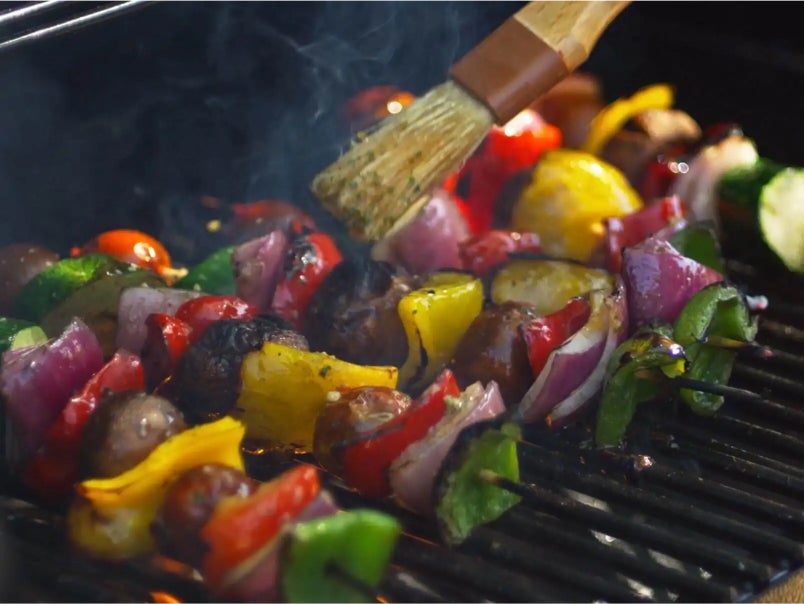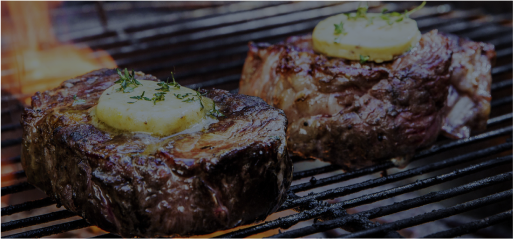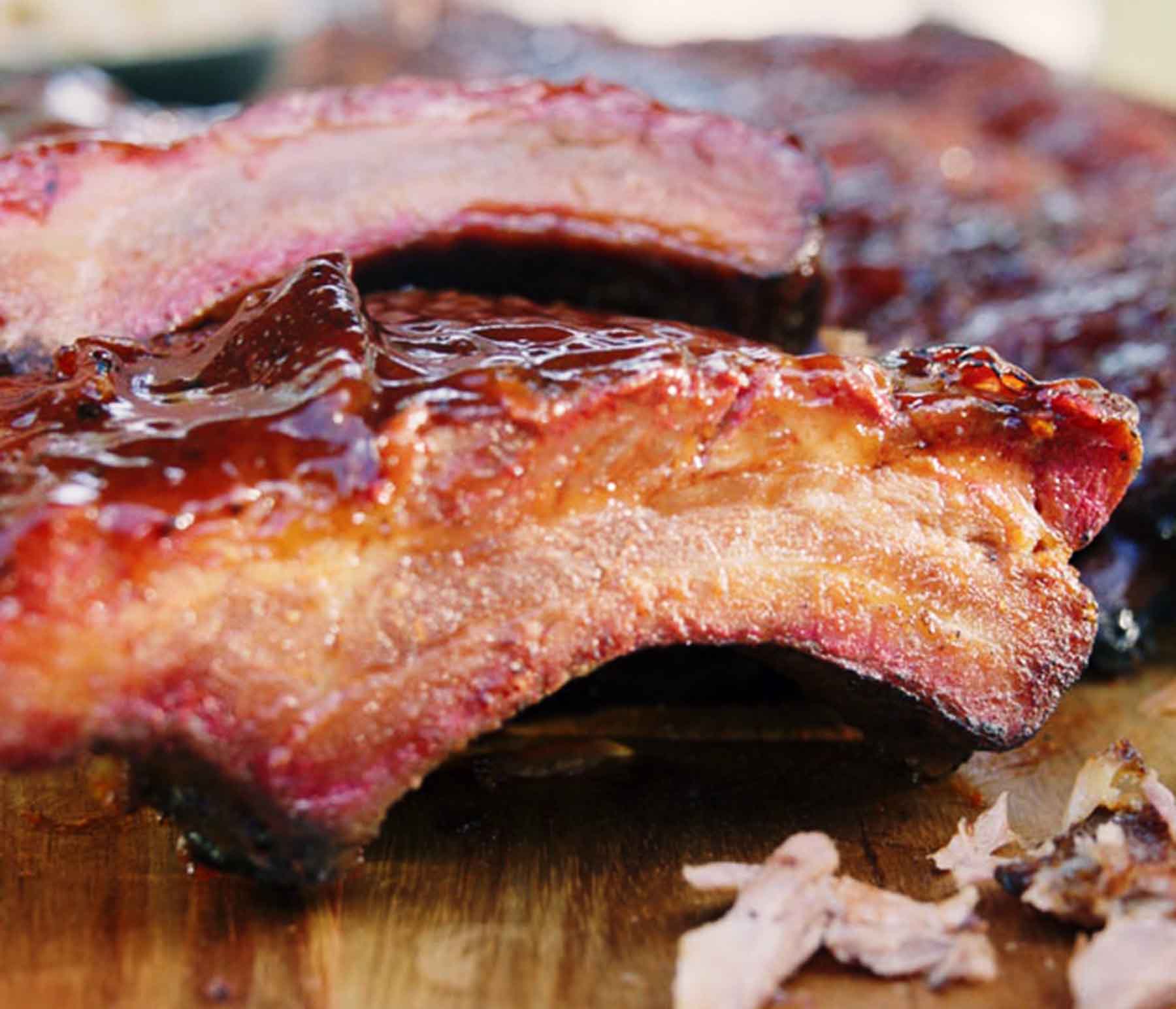Pellet Grill Pork Ribs
Whether you choose spare ribs, baby back or St. Louis style, you’re sure to cook up mouthwatering ribs with Kingsford® Hardwood Pellets.
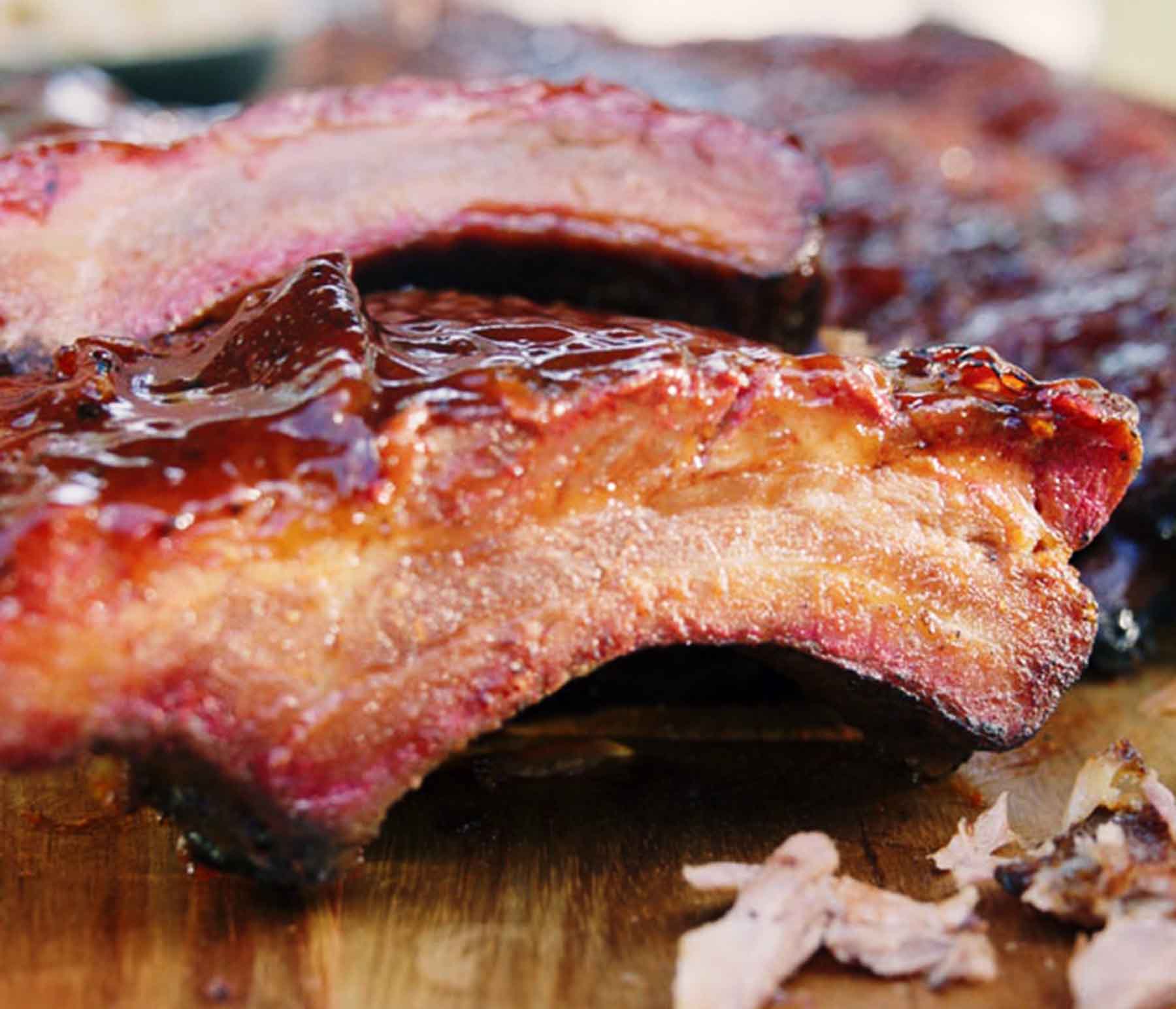

- Previous
- Next
Ingredients
-
2 slabs ribs (spare or baby back)
-
2 tbsp. dry rub
-
glaze or sauce (optional)
Add extra flavor
Suggested rubs:
- Classic BBQ
- Memphis dry
- Kansas City
- Texas-style
- Apple & honey
Suggested marinades:
- Classic BBQ
- Honey garlic
- Citrus-chipotle
- Apple cider vinegar
- Pineapple teriyaki
Suggested injections:
- Apple juice
- Apple cider vinegar
- Pinesapple juice
- Pork broth
- Maple syrup
1 Food Prep
What Type of Pork Ribs Should I Choose?
- There are 3 types of pork ribs — spare ribs, St. Louis style ribs and baby back ribs.
- Spare ribs are the meatiest of the 3, but can be more chewy than the other rib cuts.
- St. Louis style ribs are often rectangular because bits of connected cartilage, or rib-tips, have been removed. The bones are also less curved than baby back ribs. The meat is well marbled between the bones, perfect for smoking on a pellet grill.
- Baby back ribs have shorter and more curved bones than other rib cuts. But don’t let that discourage you from smoking them. Baby back ribs are packed with meat both between and on top of the bones.
Preparing Pork Ribs:
- Remove ribs from packaging and pat dry to remove excess moisture to achieve the best results.
- Allow ribs to come to room temperature (never longer than 2 hours) before grilling to ensure even cooking and flavor.
Trimming Pork Ribs:
- Remove the membrane on the bone side of the ribs and shape or square off the edges, trimming any flap meat as needed.
Seasoning Your Pork Ribs:
- Season with your favorite dry rub or spice.
- Set the rack of ribs on a cutting board or serving tray that’s larger than your ribs, and season the bone side of the ribs first.
- To get an even coat, sprinkle the seasoning from 12″ to 18″ above the bones and be sure to cover the bones as evenly as possible, and remember to get the ends or cut sides of the rib rack.
- Flip the ribs over and season the meat side generously.
Select a rib with the fresh date being as far in the future as possible. Choose ribs that are a reddish/pink color as opposed to pale pink, they will have more moisture retention after cooking. Also, look for a rib with plenty of internal marbling to ensure juiciness and flavor.
Although there is nothing wrong with frozen ribs, a fresh rib will provide a bit more of a vibrant meat flavor so go with fresh ribs whenever possible. Supermarket pork ribs are commonly sealed in packaging to extend their freshness from a few days to a few weeks. But because of this packaging, the closer you get to the fresh date, the more susceptible the meat is to being past its prime.
Credit: World Champion Pitmaster Chris Lilly of Big Bob Gibson Bar-B-Q.
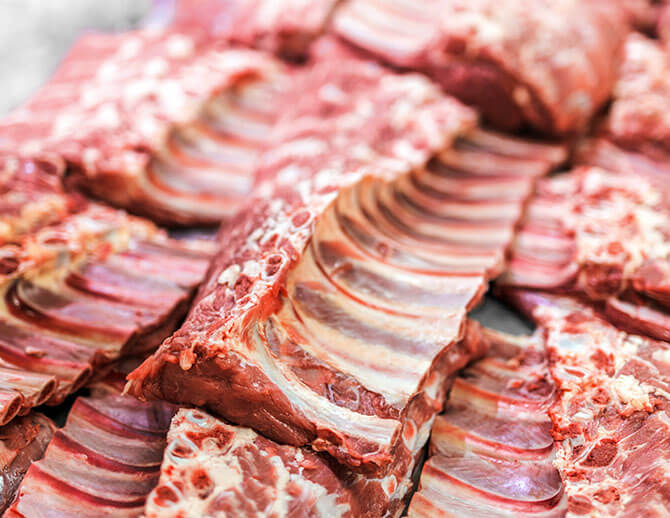
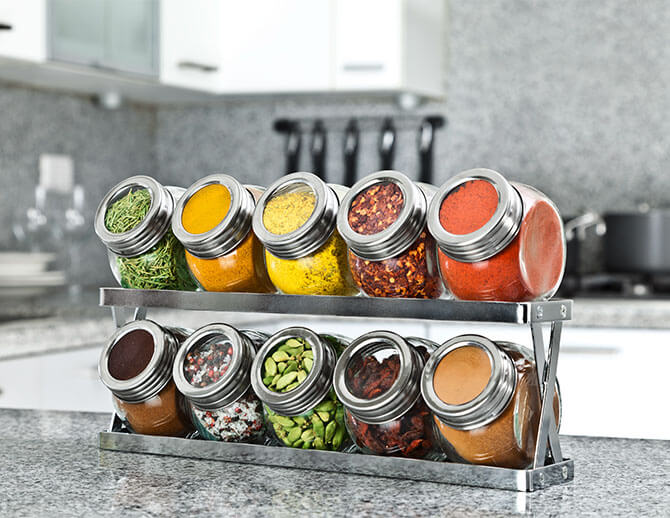

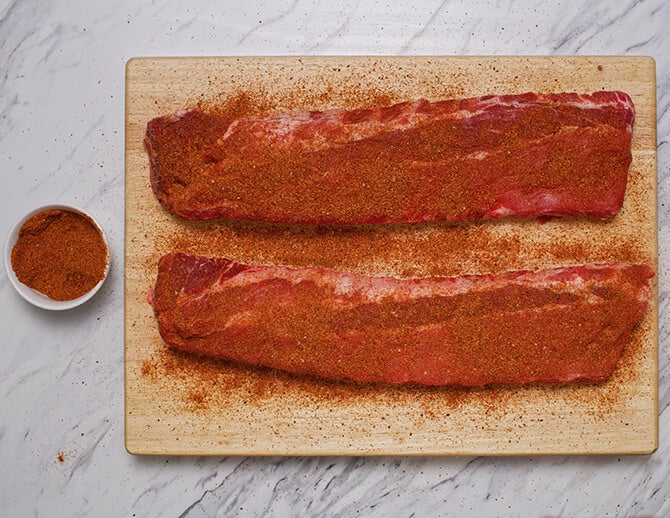
2 Grill Prep
Pellets
- We recommend Kingsford® Hardwood Blend Cherry Pellets, Kingsford® Grillmaster’s Choice Hardwood Blend Pellets or Kingsford® Hardwood Chef’s Blend Pellets because they contain fruitwoods that work great with this recipe.
Amount: 6 lb.
Temp: 225°F & 250°F (Low Heat)
Carefully hold your hand about 5” to 6” above the grate, and refer to the temperature settings below:
• High Heat (450° to 550°F):
2 to 4 seconds
• Medium Heat (350° to 450°F):
5 to 6 seconds
• Low Heat (250° to 350°F):
8 to 10 seconds
Make sure your clothing doesn’t touch the grate, and always move your hand away from the heat before you feel discomfort.
When you’re at temp, put cooking oil on a folded paper towel. Grab the oiled paper towel with long-handled tongs and oil the grate thoroughly.
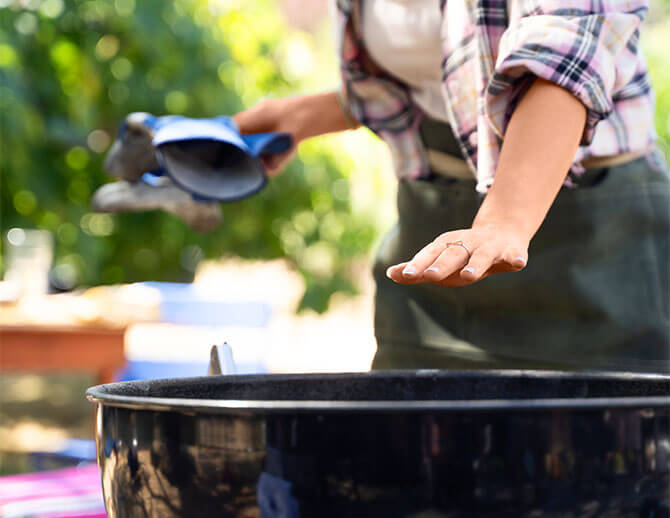
3 The Cook
Steps to smoke your pork ribs:
- Place the thermometer probe into the thickest part of the ribs without touching any bones and position it at the center of your pellet grill.
- Shut the lid of your pellet grill, and smoke for 3 hours.
- If you prefer to spritz the ribs during the cooking process, spritz them every 45 minutes. An apple juice spritz or spray is the most popular.
- After 3 hours, remove the ribs from the grill and wrap them in aluminum foil. This step makes them more tender.
- Adjust the temperature to 250°F and place the ribs back in the center of the cooker. Cook for 2 more hours in the foil pouch.
- Carefully remove the rib pouch from your pellet grill and place them bone side up on a cutting board. You will notice that the meat has shrunk, and the ends of the bones are visible, this is a sign that the meat is tender.
- To sauce, start by brushing a thick coat of barbecue sauce on the bottom or bone side of the ribs. Flip them over and repeat on the top side of the ribs. Carefully place the ribs back on the smoker and allow the sauce to set up or adhere to the ribs for up to one hour. Check often to make sure the sauce doesn’t burn.
- Remove the ribs when the sauce becomes firm and the pork has reached an internal temperature of 145°F on a digital meat thermometer.
- Place the ribs on a cutting board meat side down. Use a very sharp knife to slice between the bones.
- Serve and enjoy immediately.
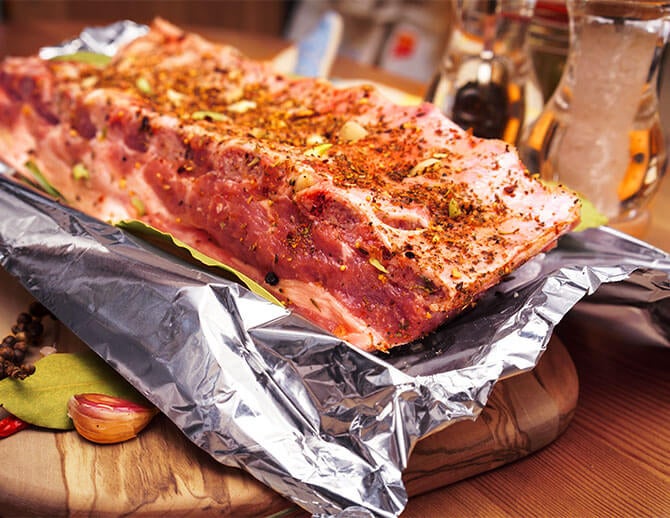
Pairs Well With:
- Cornbread
- Coleslaw
- Baked beans
- Potato salad
- Mac & cheese
How to Store Cooked Ribs:
- First, chill them in the fridge for 3-4 days, wrapping tightly with foil or sealing in a container. They can be frozen for up to three months, just make sure to cool completely and double wrap them tightly (first in plastic wrap, then in a bag). Make sure to label them with the date!
- For more information on food storage, consult the links below:
Cold Food Storage Chart
4 Steps to Food Safety
Foodsafety.gov
How to Reheat Cooked Ribs:
- Reheat ribs low and slow to keep them moist! Wrap them in foil with some juices and reheat at 250°F in the oven (or 225°F on the smoker) until they reach a 165°F internal temperature. Take the ribs out of the fridge 30 minutes before reheating for best results. Don’t overcook them and watch the internal temperature!
For safe meat preparation, reference the USDA website.
Frequently Asked Questions
-
How do I pick the best pork ribs?When picking pork ribs, freshness is key! Look for pinkish-red meat with some marbling (white fat lines), and avoid any unpleasant smells. Decide between baby back ribs for a leaner, meaty option that cooks faster, or spare ribs for a richer flavor and more chew due to the extra fat and cartilage. Steer clear of ribs with excessive fat or exposed bones ("shiners") that might fall off during cooking. Fresh is best, but frozen works too — just thaw completely in the fridge first. Happy grilling!
-
What are the benefits of a pellet grill?Pellet grills elevate your ribs grilling game with even heat, optional smoke flavor, easy temperature control, less monitoring, and surprising versatility for grilling, smoking, baking, and roasting.
-
What are the best pellet flavors for smoking pork ribs?When it comes to smoked pork ribs, your pellet choice can significantly impact the flavor profile. Hickory, the king of BBQ smoke, infuses ribs with a bold and almost bacon-like smokiness. For a milder touch with a hint of fruity sweetness, maple or cherry are excellent choices, allowing the natural pork flavor to peek through while adding a delightful twist.
-
Should I smoke ribs bone up or down?It's up to you! Bone up looks nice but some say bone down cooks more evenly. Want a showstopper? Smoke bone up. Prefer even cooking and browning? Go bone down. You can even try both methods on the same rack to see which you prefer!
-
Should I wrap ribs in foil when smoking?Wrap your ribs in foil for a speedier cook and potentially juicier results, but expect a milder smoke taste and softer bark. Skip the foil for maximum smoke flavor and a crispier crust, but it might take longer. Experiment! You can even wrap half the rack for a comparison.
-
Should I brine pork ribs?Brining your ribs is optional. Benefits include extra juicy and tender meat (great for lean cuts) and some added flavor. However, ribs are smoked for a shorter time than brisket so brining's impact might be subtle. Brining also adds prep time. Skip the brine if you're short on time or prefer pure pork flavor. Experiment to see what you like best!
-
What are the best spices for pork?Smoked pork ribs are all about balancing smoky goodness with flavorful rubs. Smoked paprika adds another smoky layer. Don't forget the essential savory base of salt, pepper, and garlic powder. For depth, consider warm spices like onion powder, chili powder, and cumin. Finally, a touch of heat from cayenne or chipotle powder, or a hint of earthiness from regular paprika, can personalize your rub to perfection.
-
What to pair with ribs?A barbecue centerpiece, smoked pork ribs go great with a range of classic sides. Coleslaw's cool, tangy crunch cuts through the rich smokiness, refreshing the palate between bites. Baked beans add a sweet and savory counterpoint, while creamy mac and cheese provides a luxurious contrast. For a well-rounded meal, starchy options like cornbread and potato salad soak up the flavorful juices from the ribs, making them delightful companions.
-
How should I store cooked ribs?First, chill them in the fridge for 3–4 days, wrapping tightly with foil or sealing in a container. They can be frozen for up to three months, just make sure to cool completely and double wrap them tightly (first in plastic wrap, then in a bag). Make sure to label them with the date!
For more information on food storage, consult the links below:
Cold Food Storage Charts
4 Steps to Food Safety
Foodsafety.gov -
How should I reheat ribs?Reheat ribs low and slow to keep them moist! Wrap them in foil with some juices and reheat at 250°F in the oven (or 225°F on the smoker) until they reach a 165°F internal temperature. Take the ribs out of the fridge 30 minutes before reheating for best results. Don't overcook them and watch the internal temperature!
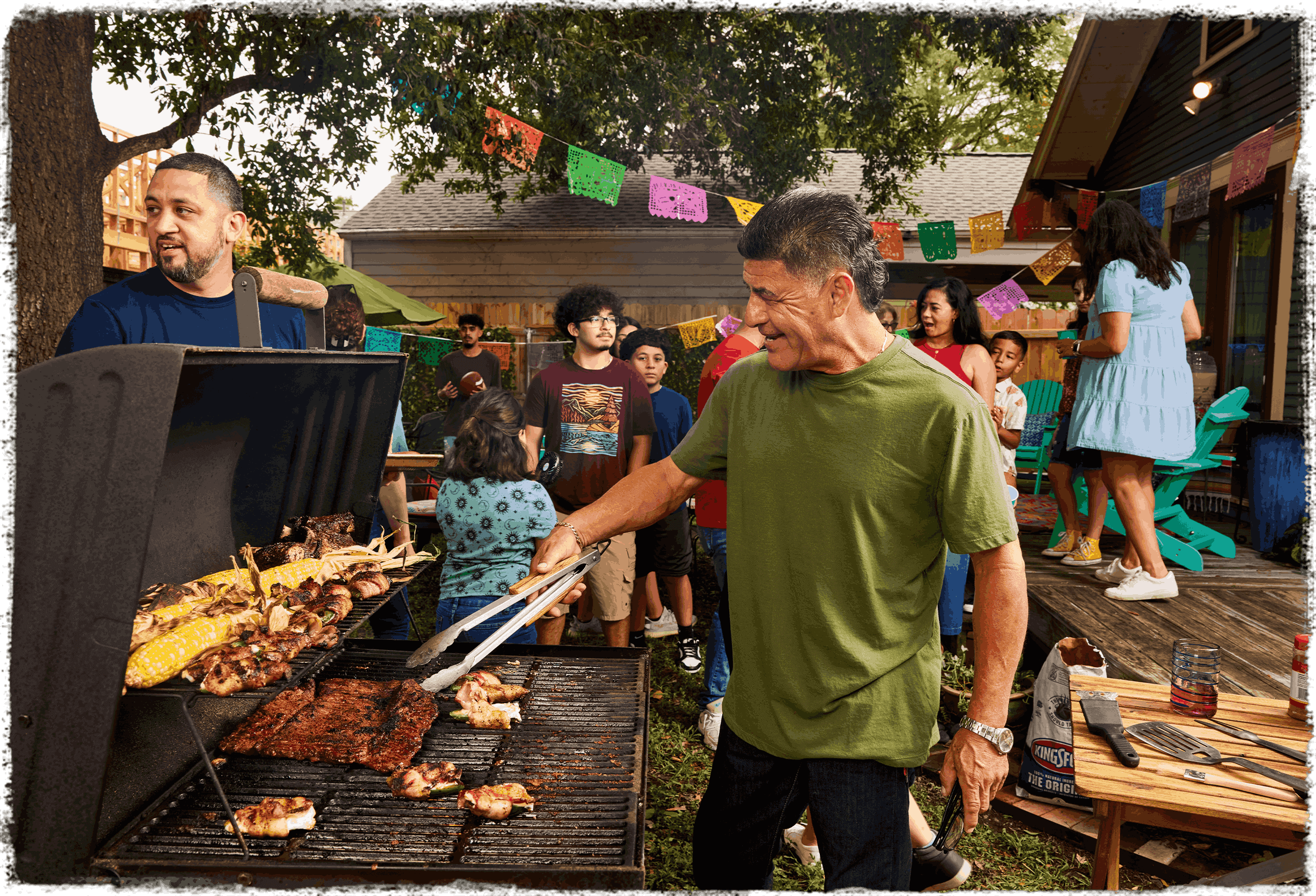
Light your fire with Kingsford® products.
Explore our full range of charcoal, pellets and flavor boosters to take your grilling to the next level.
